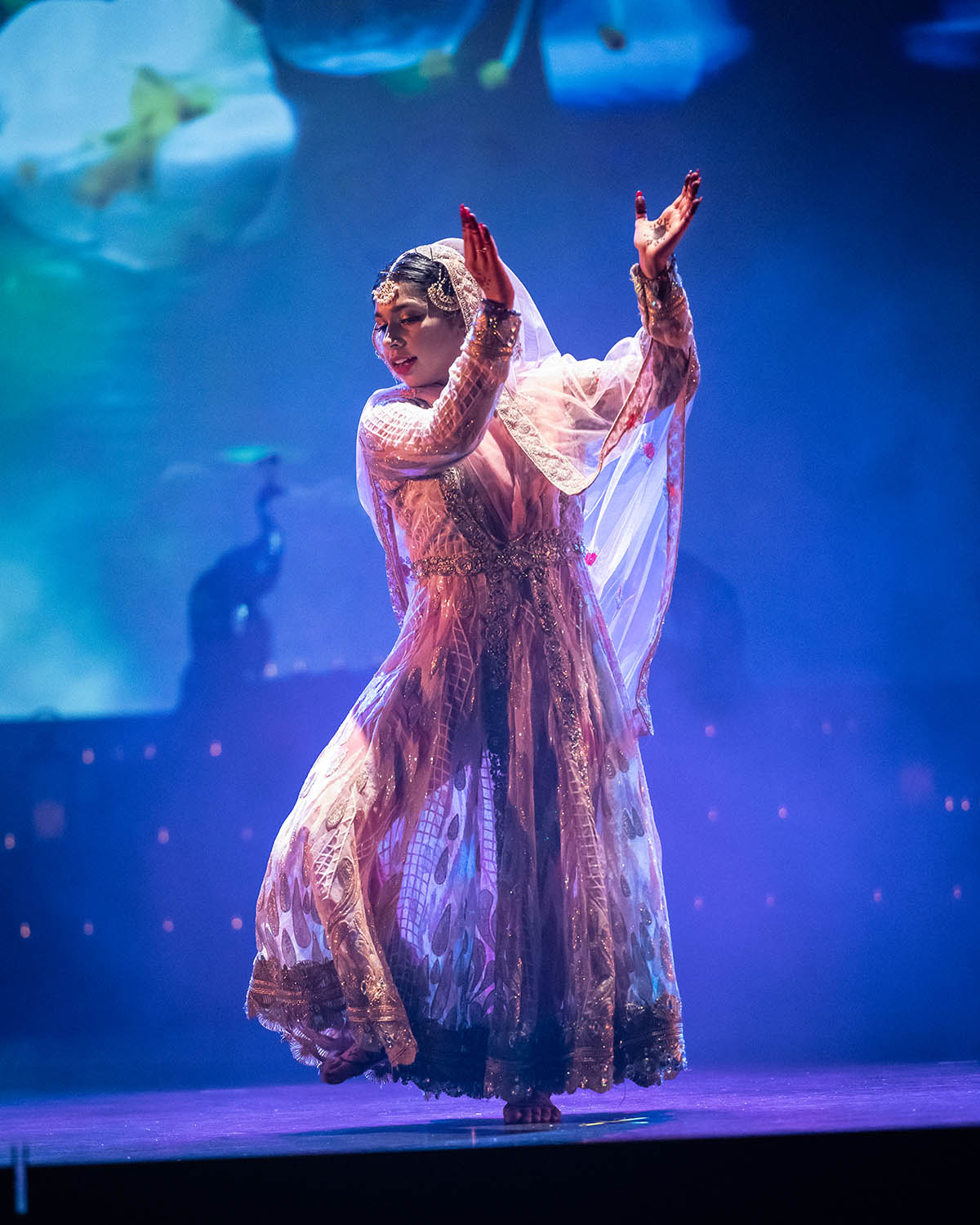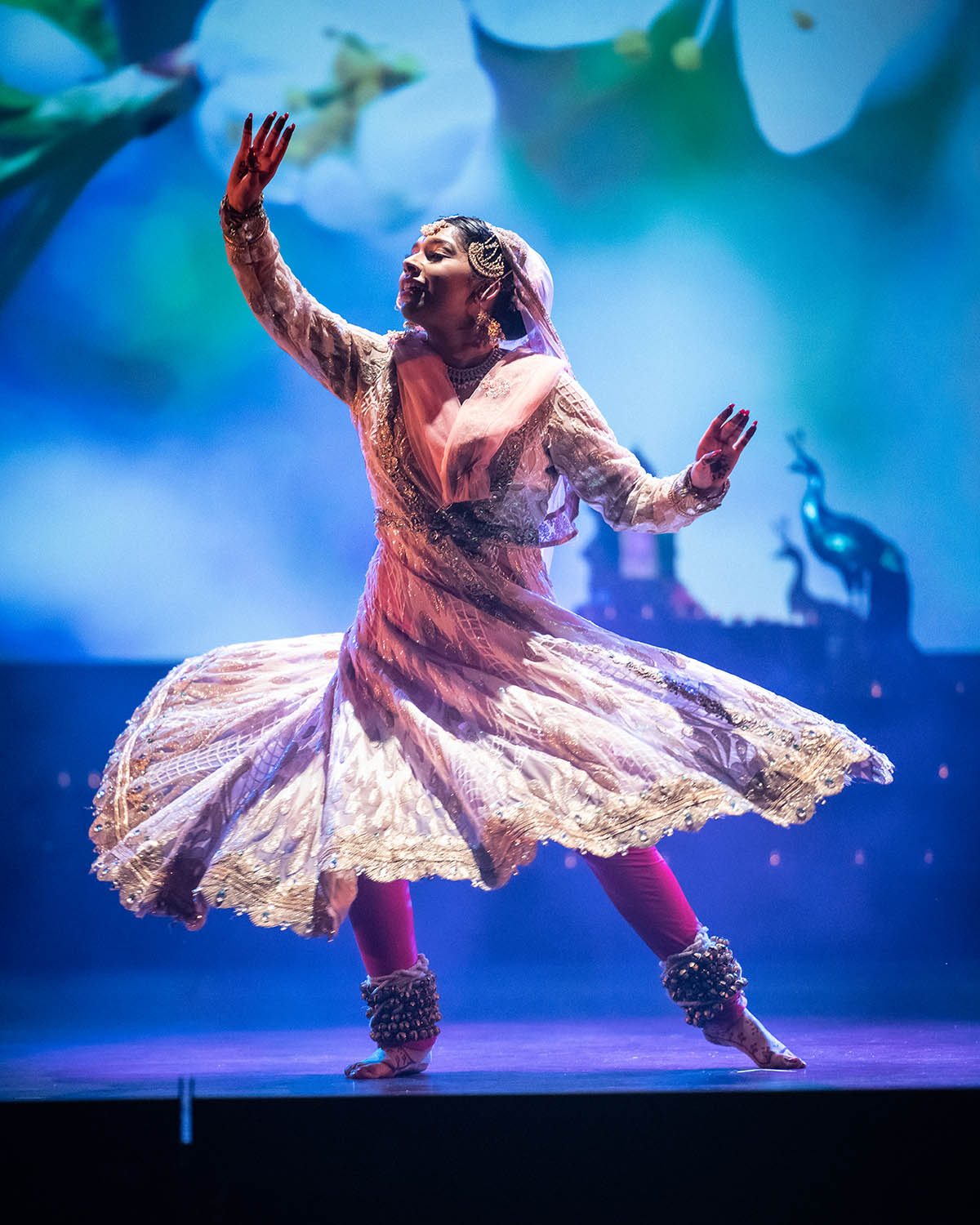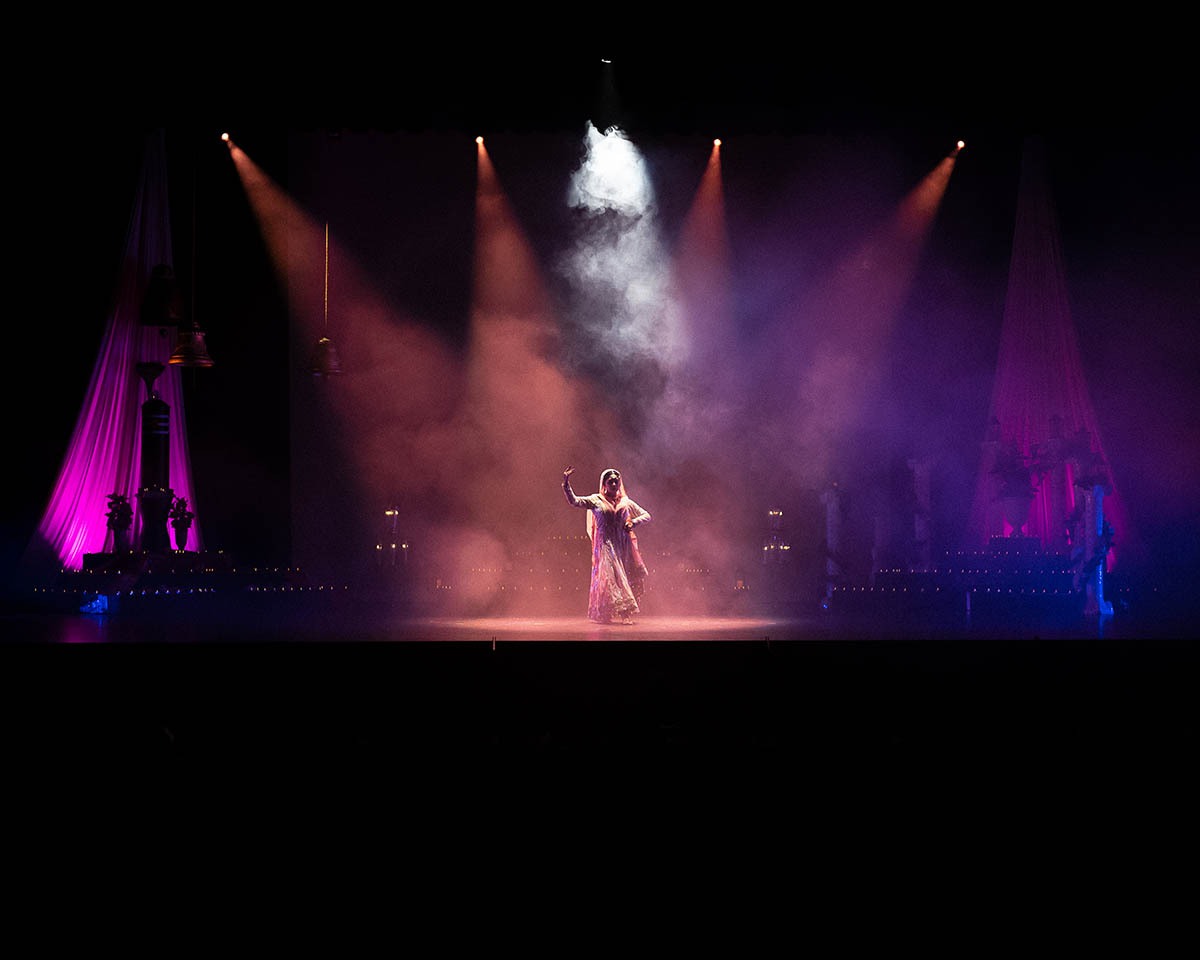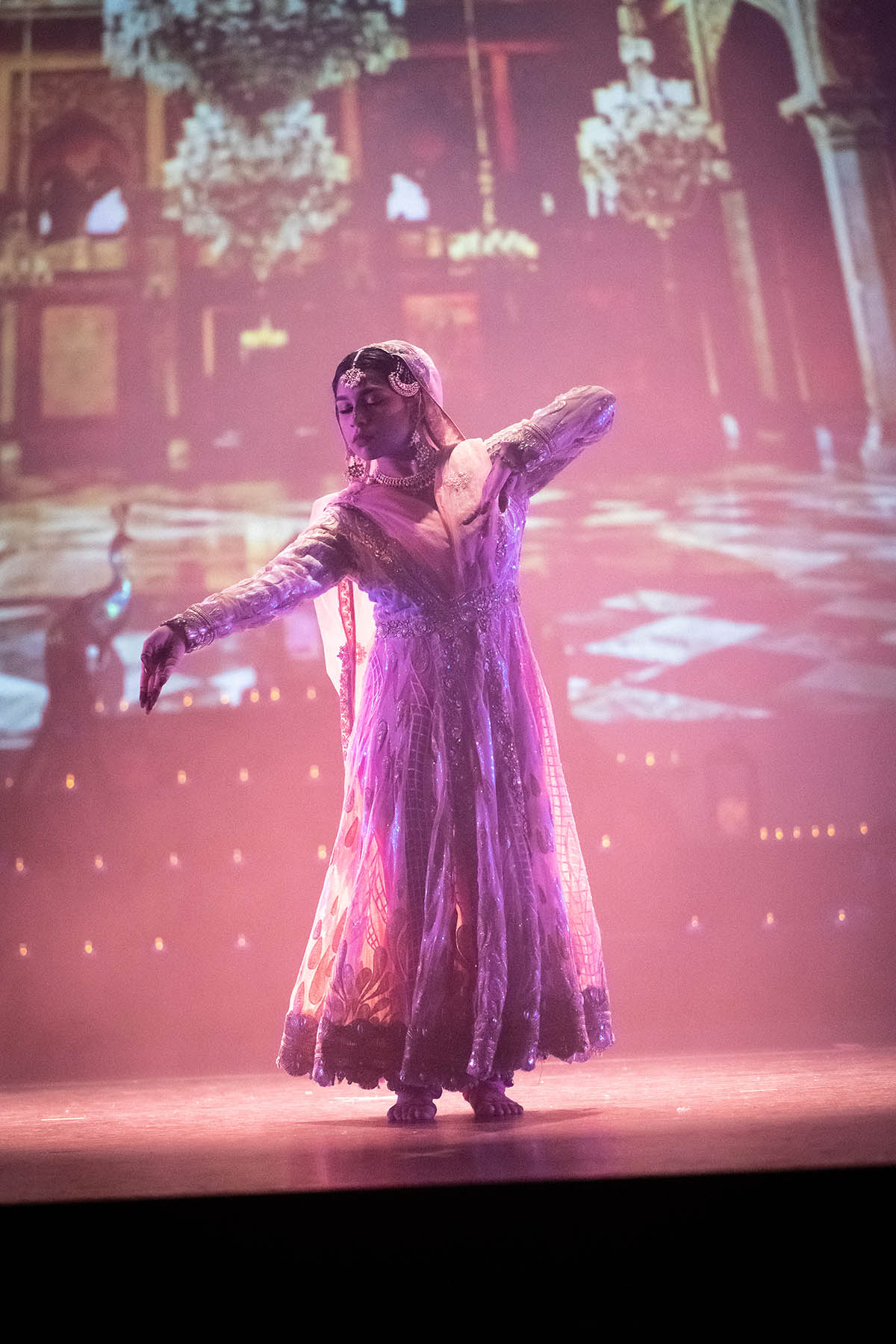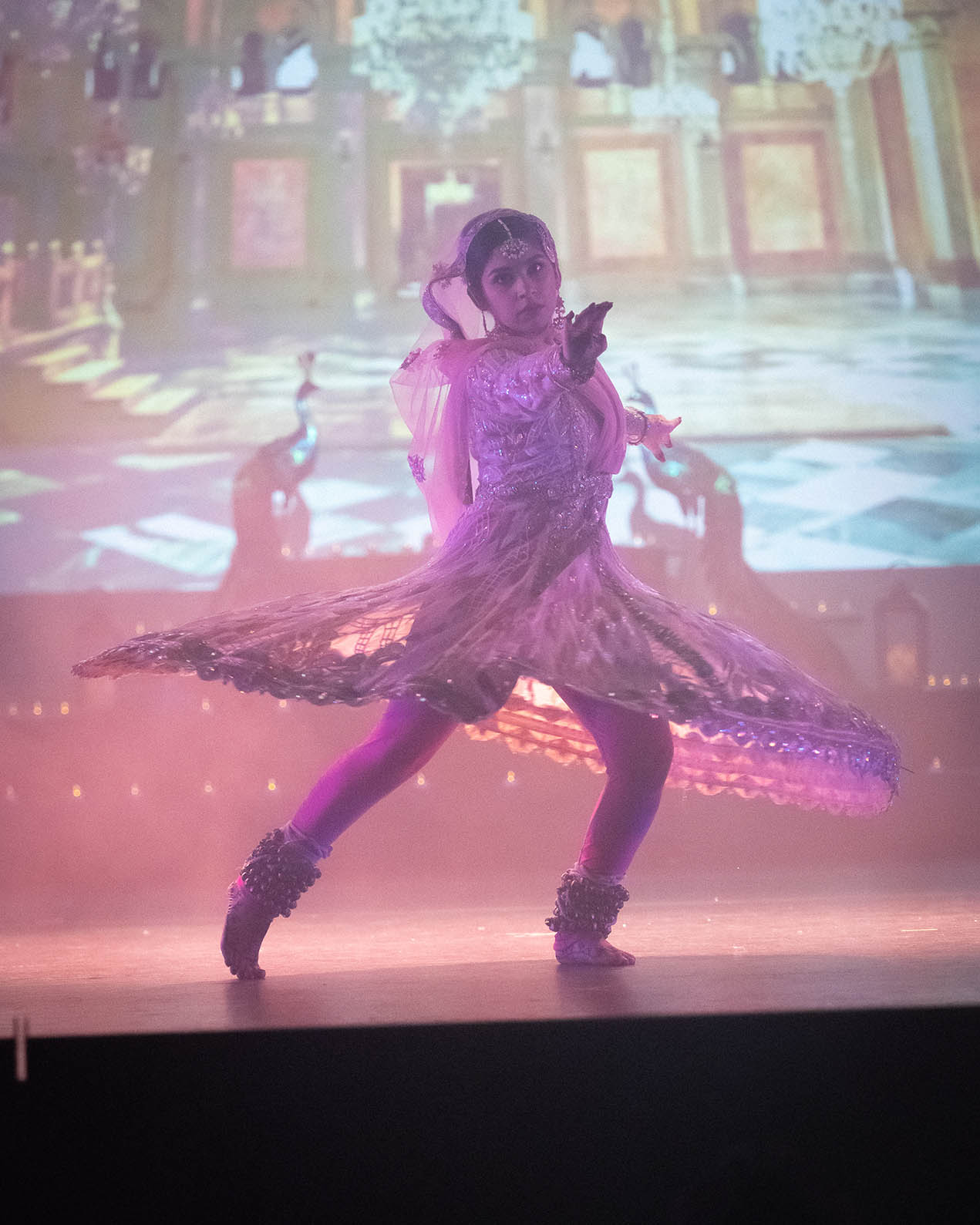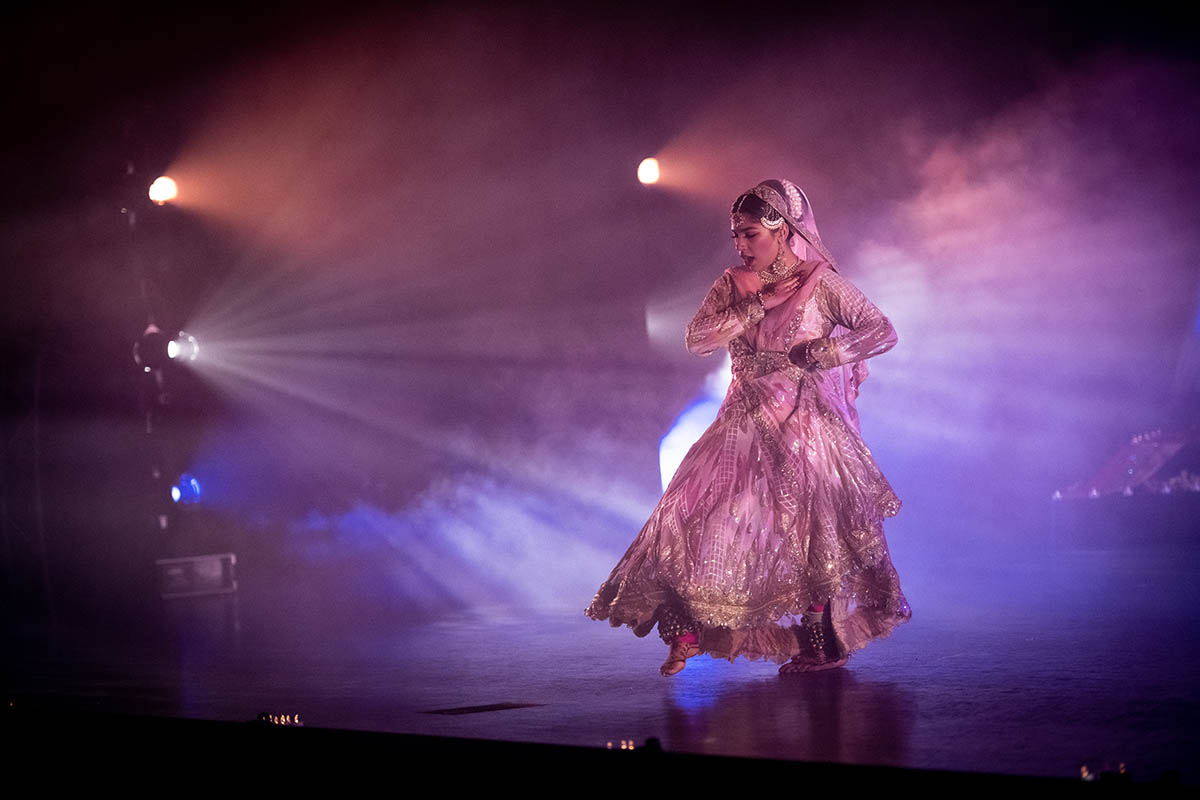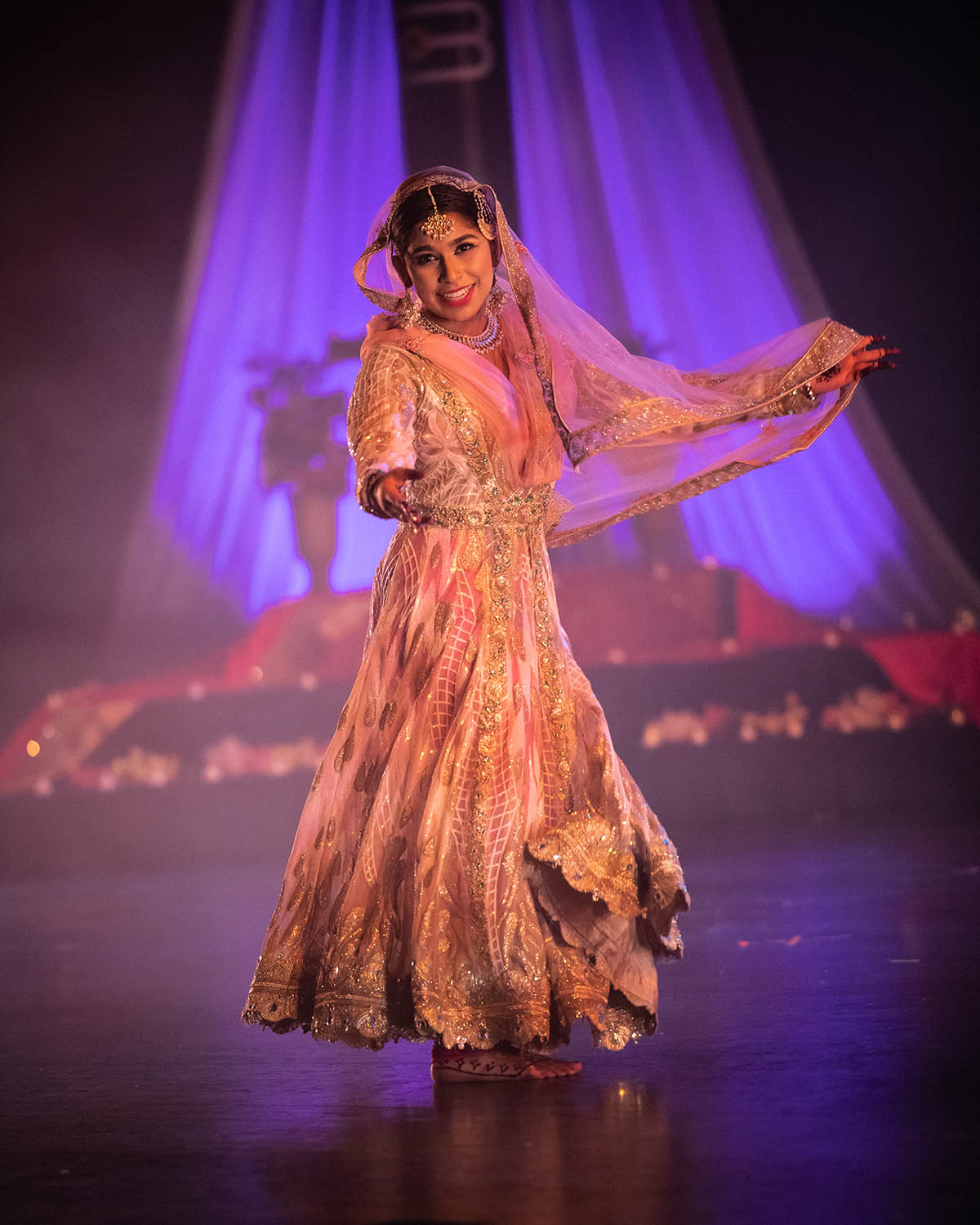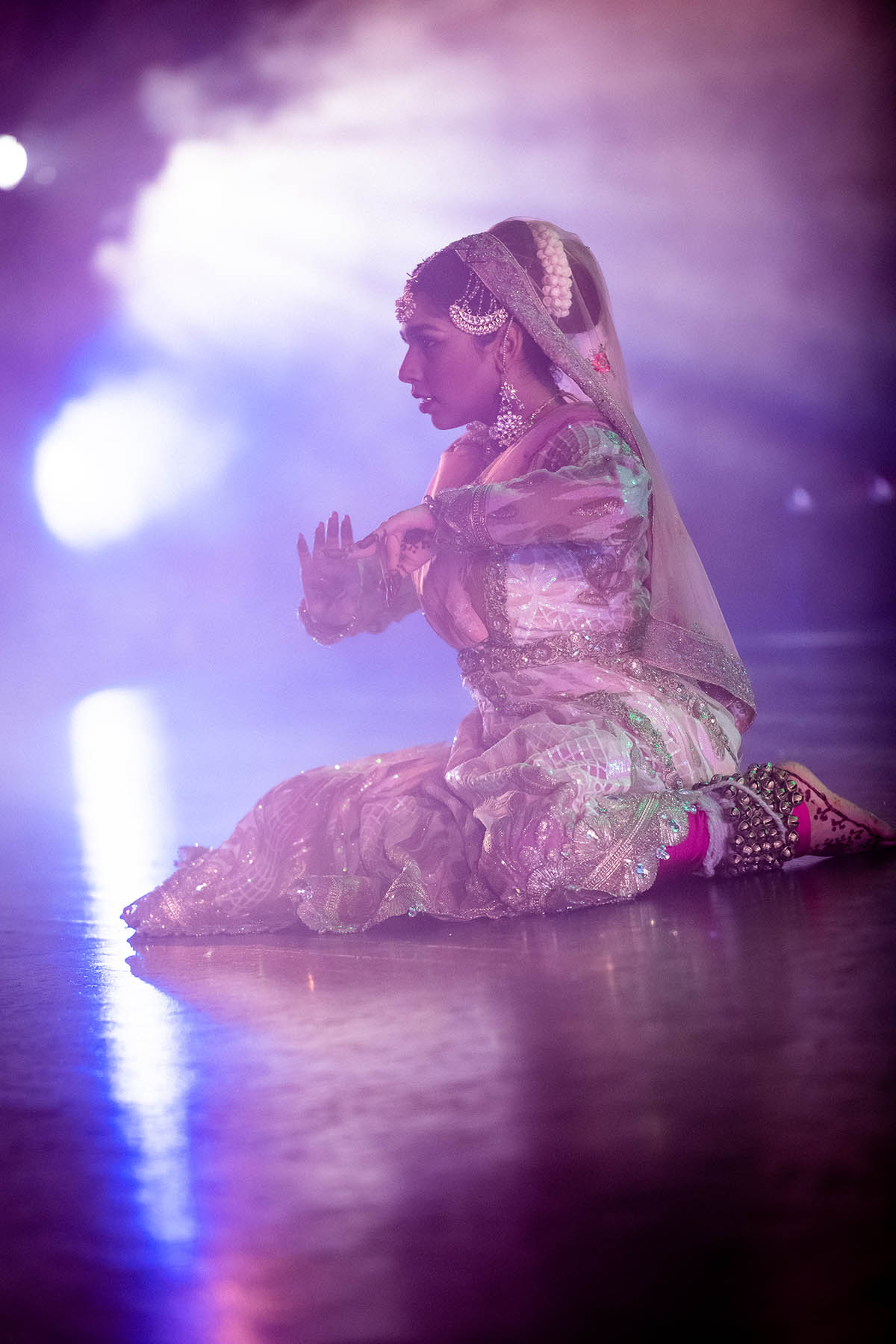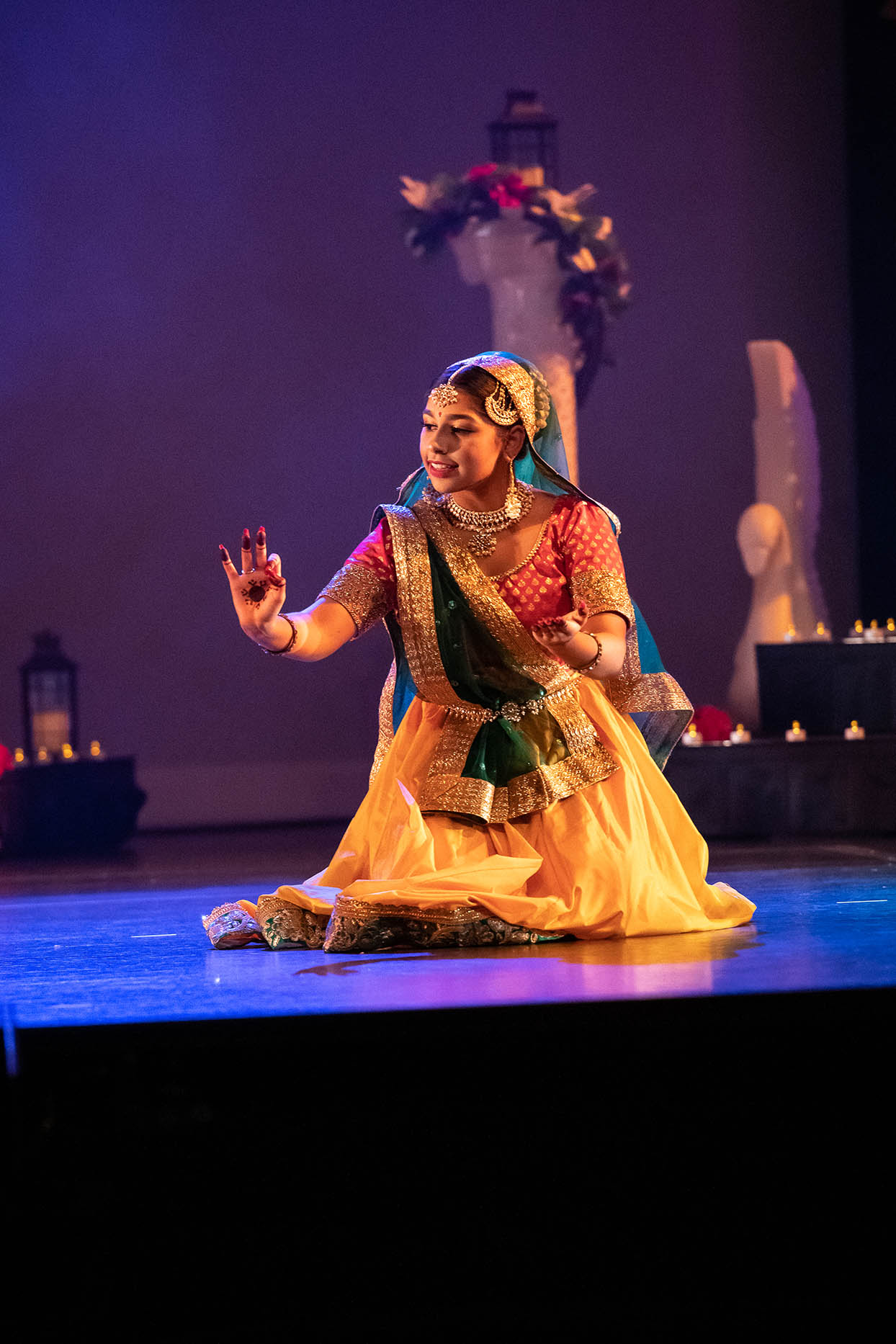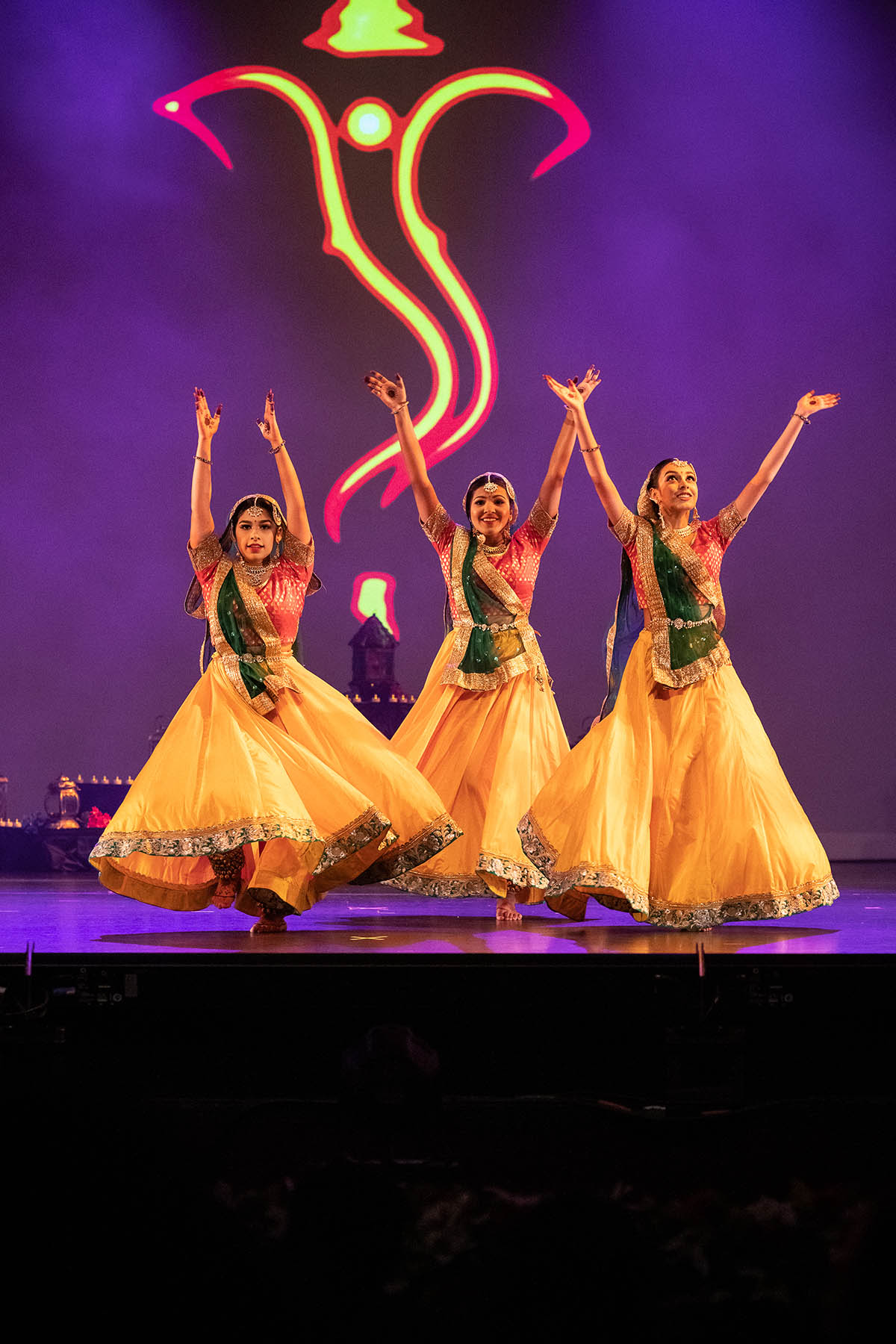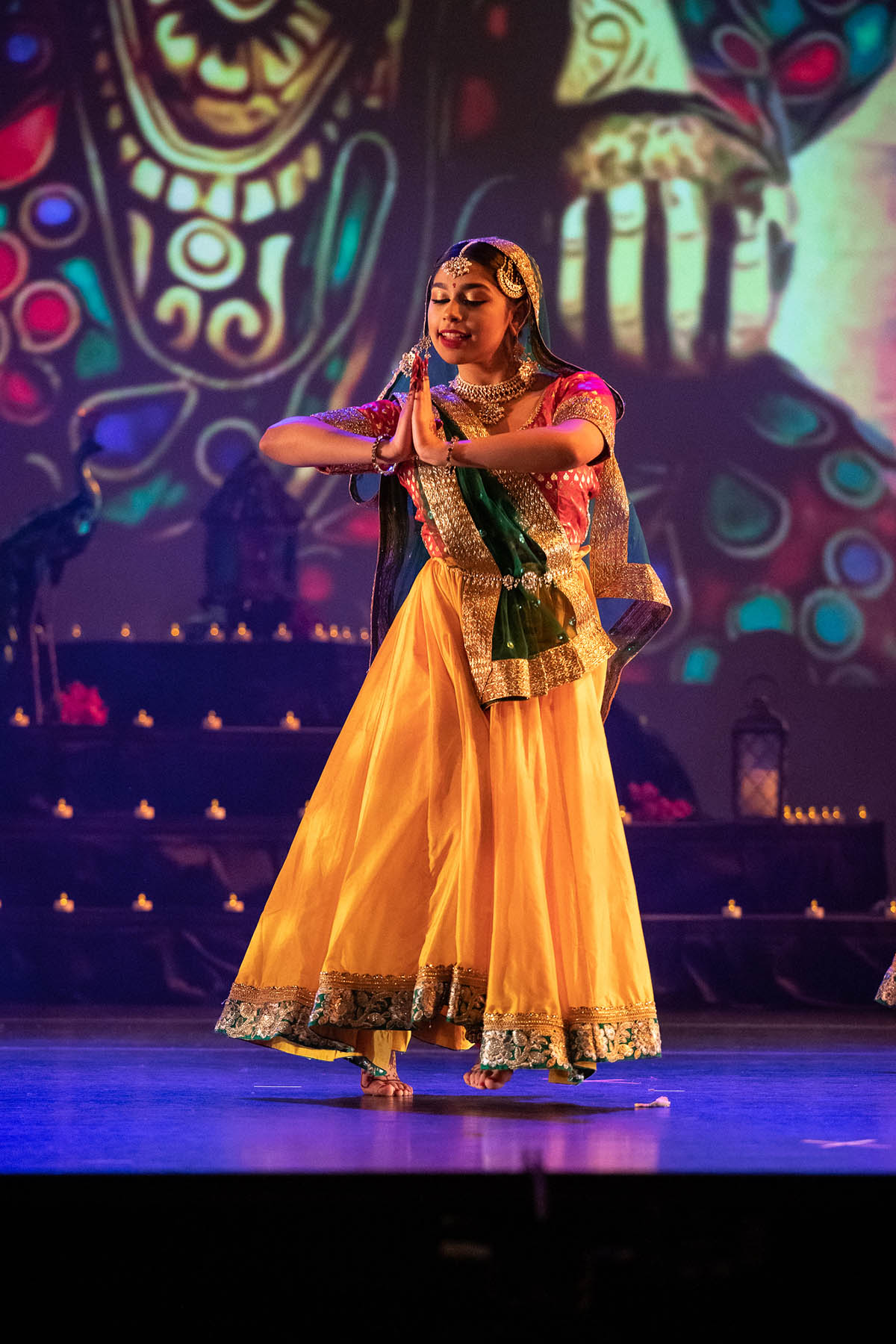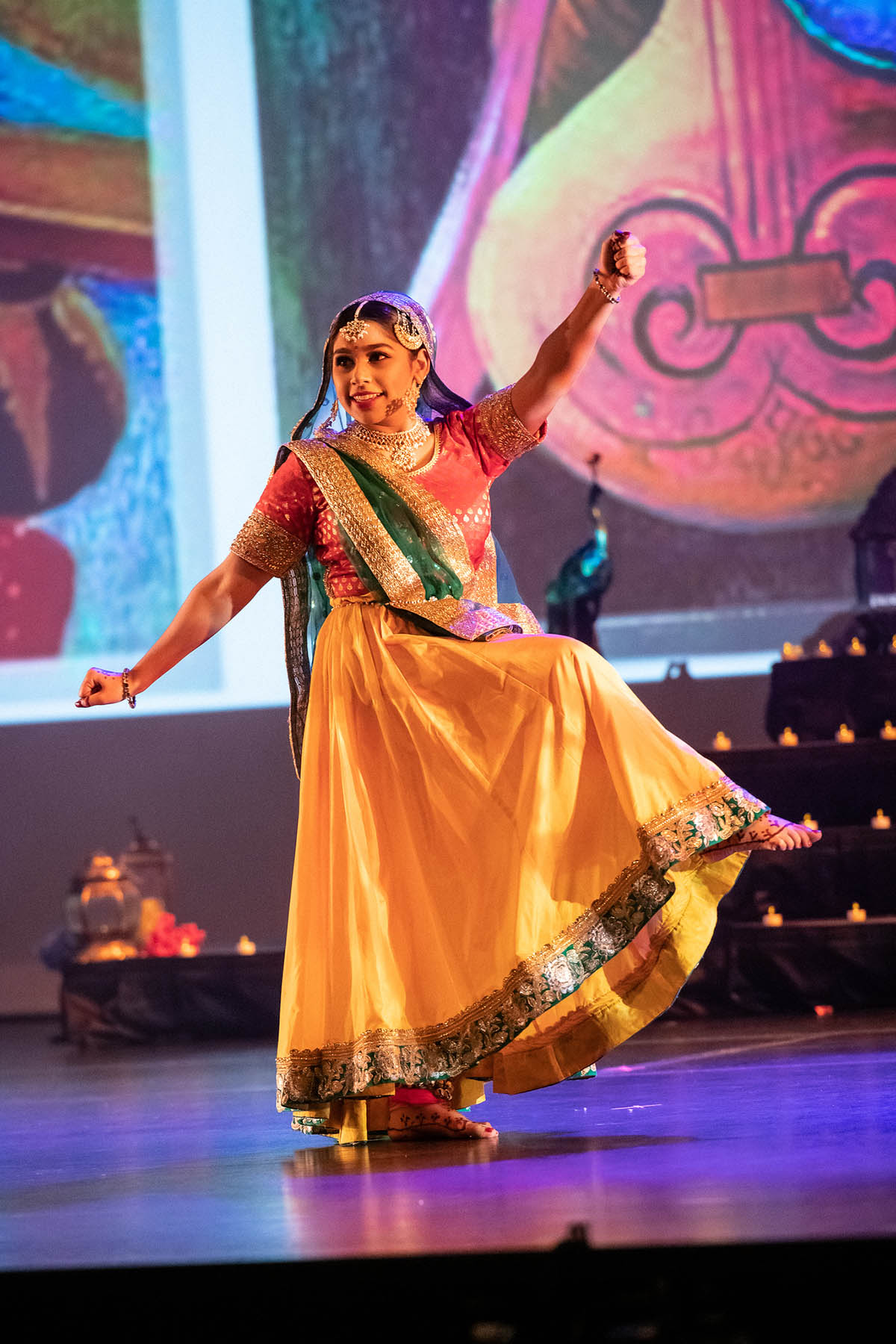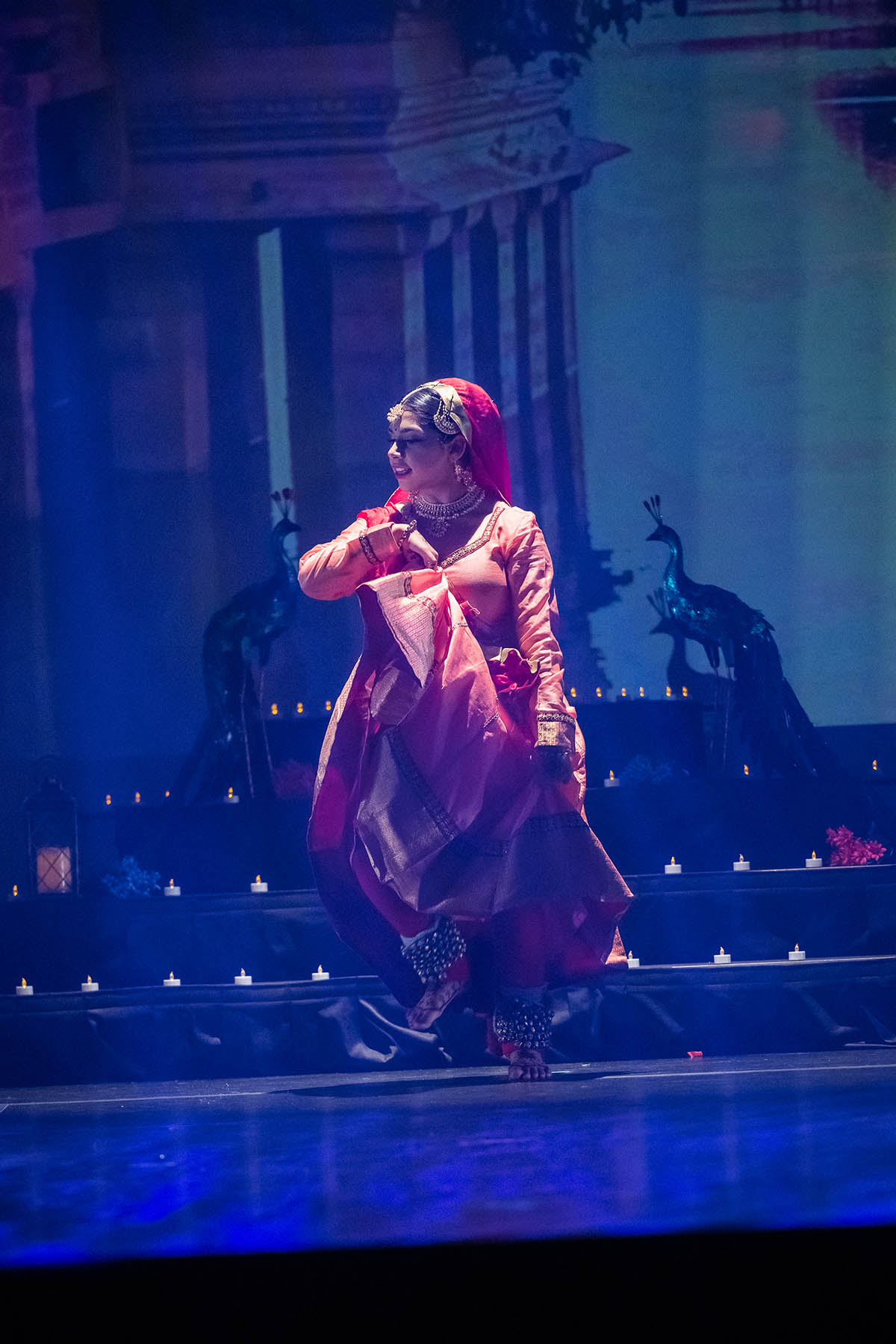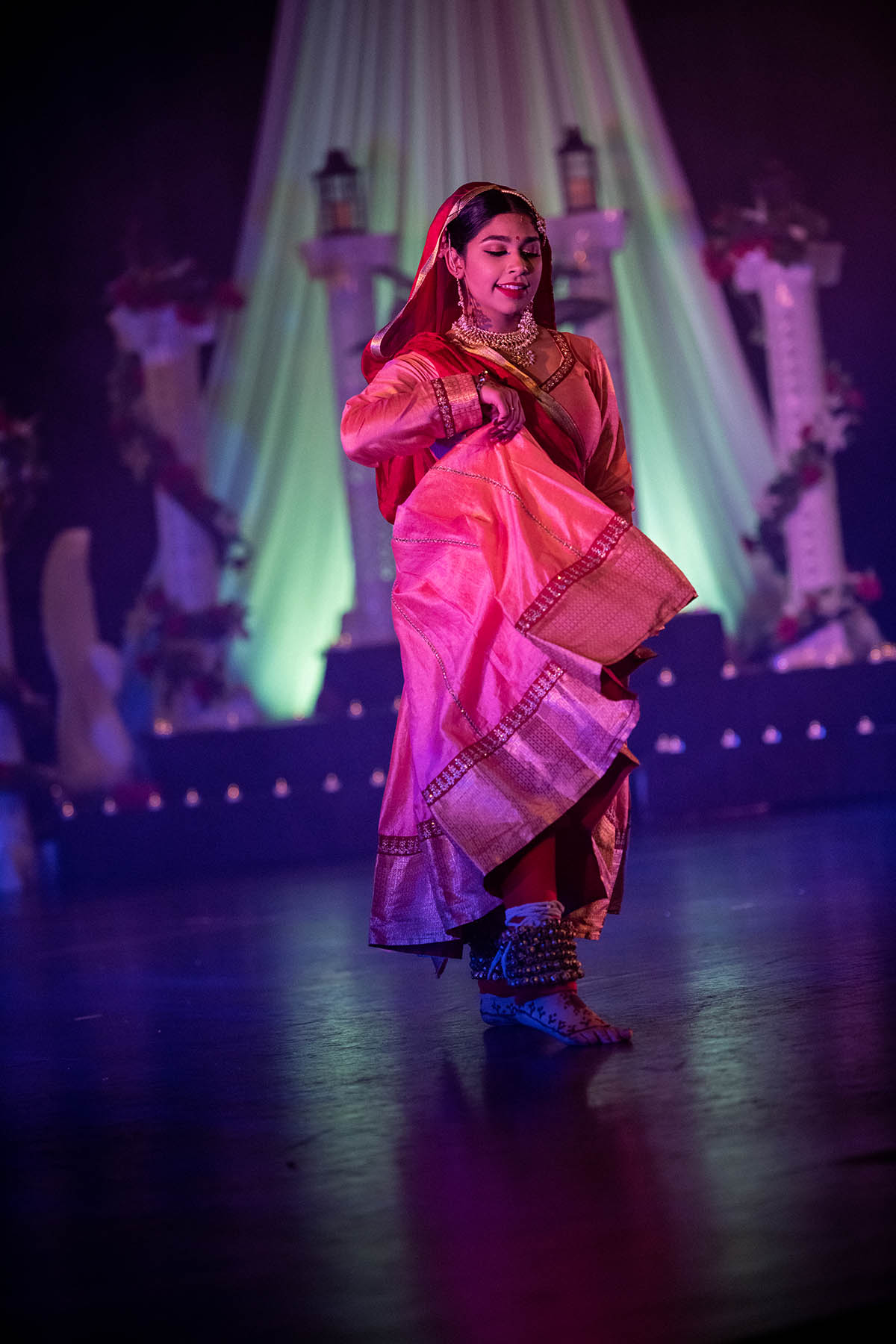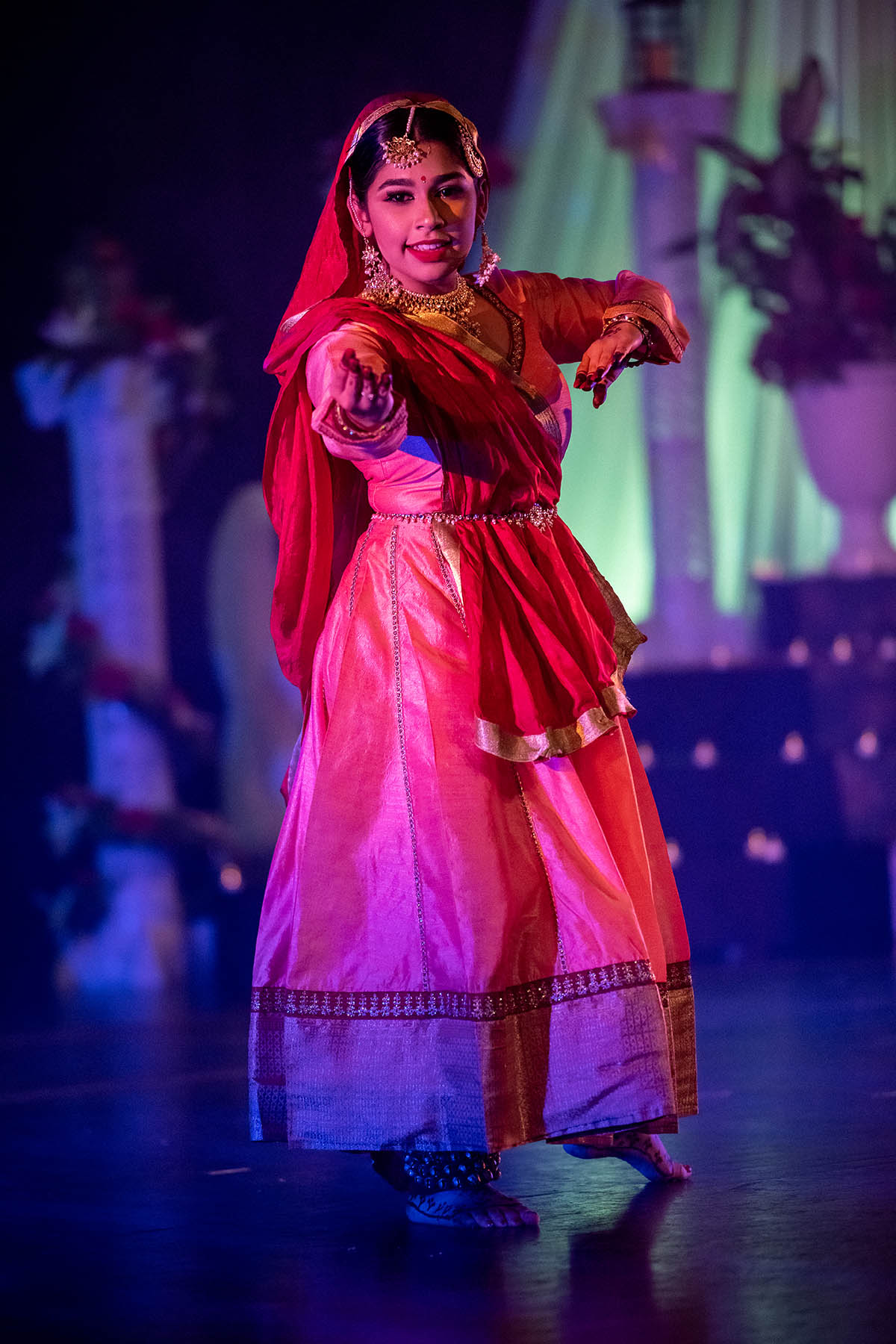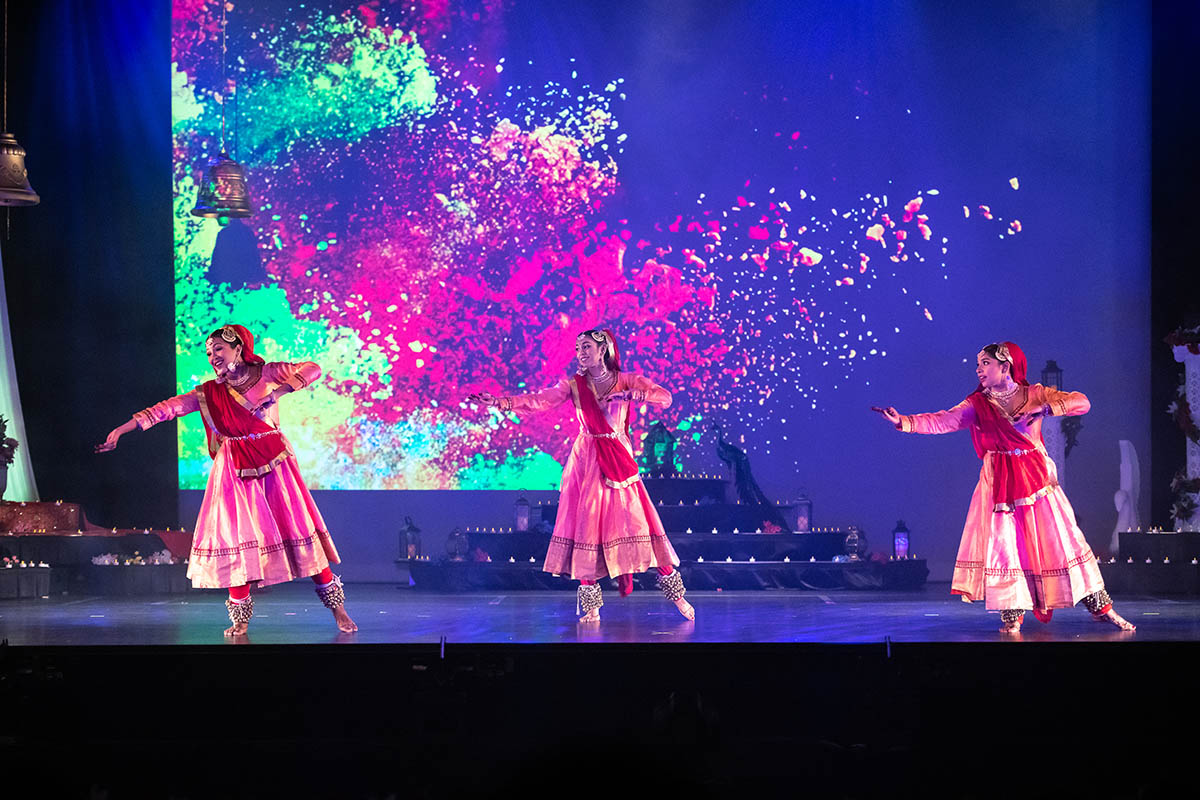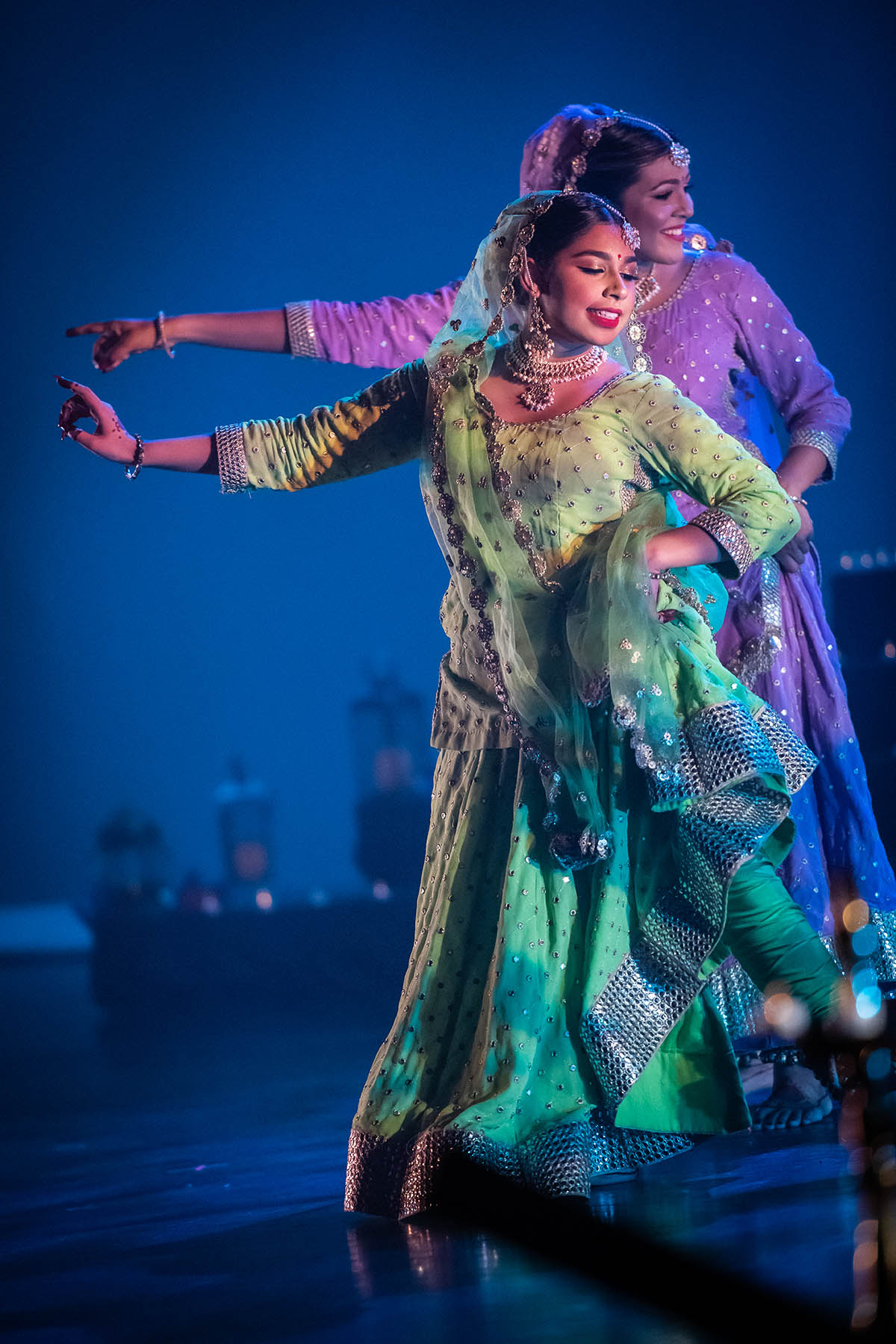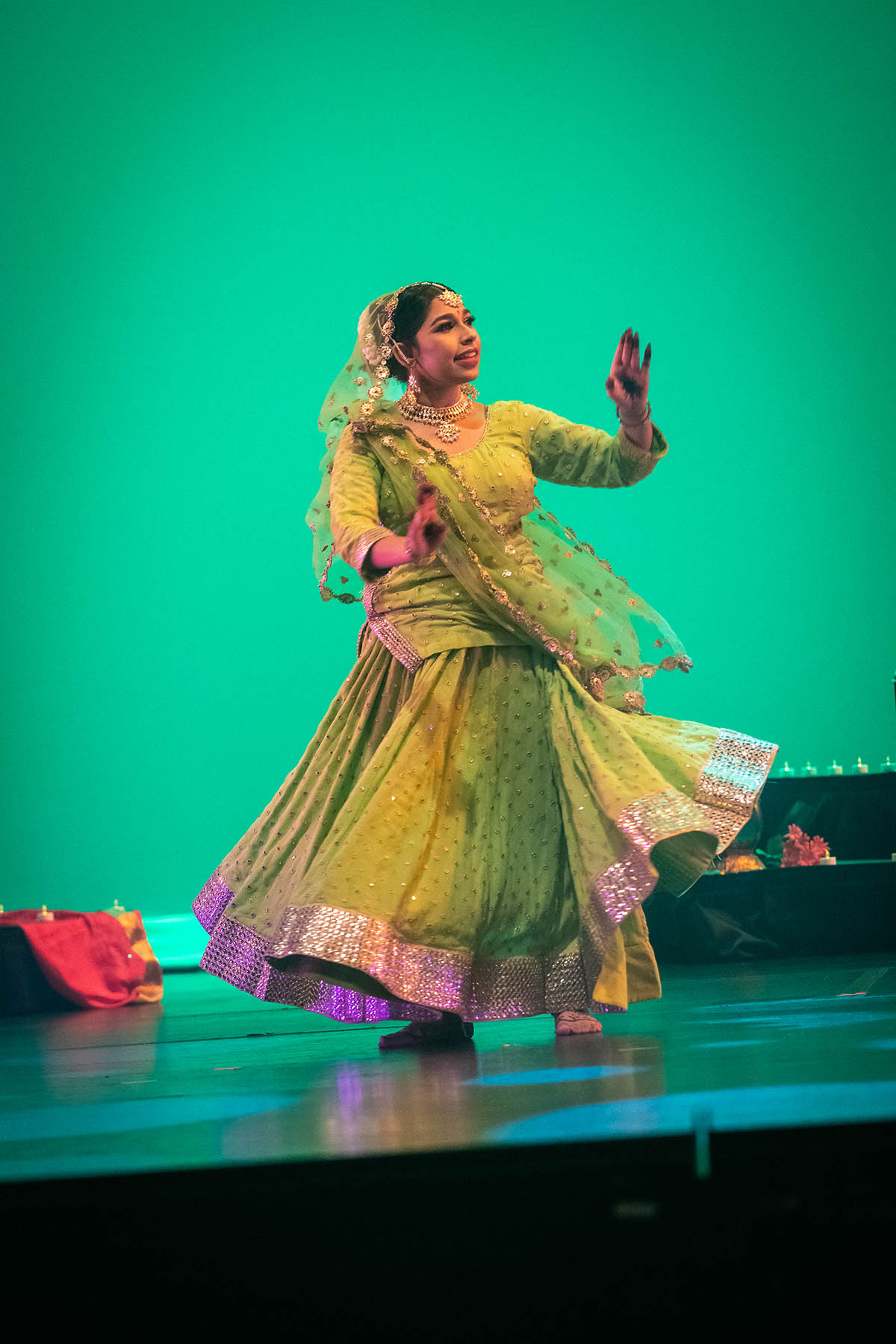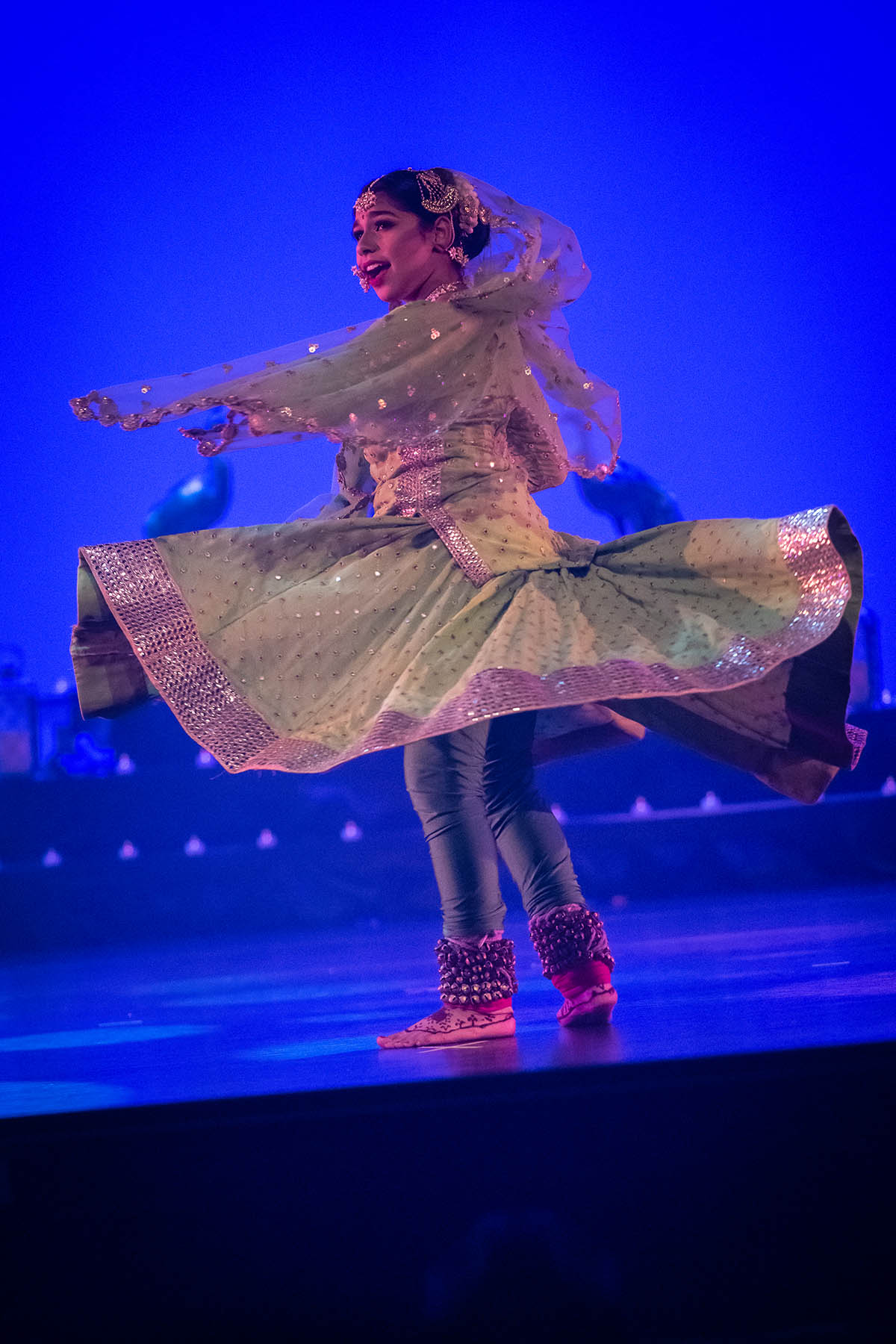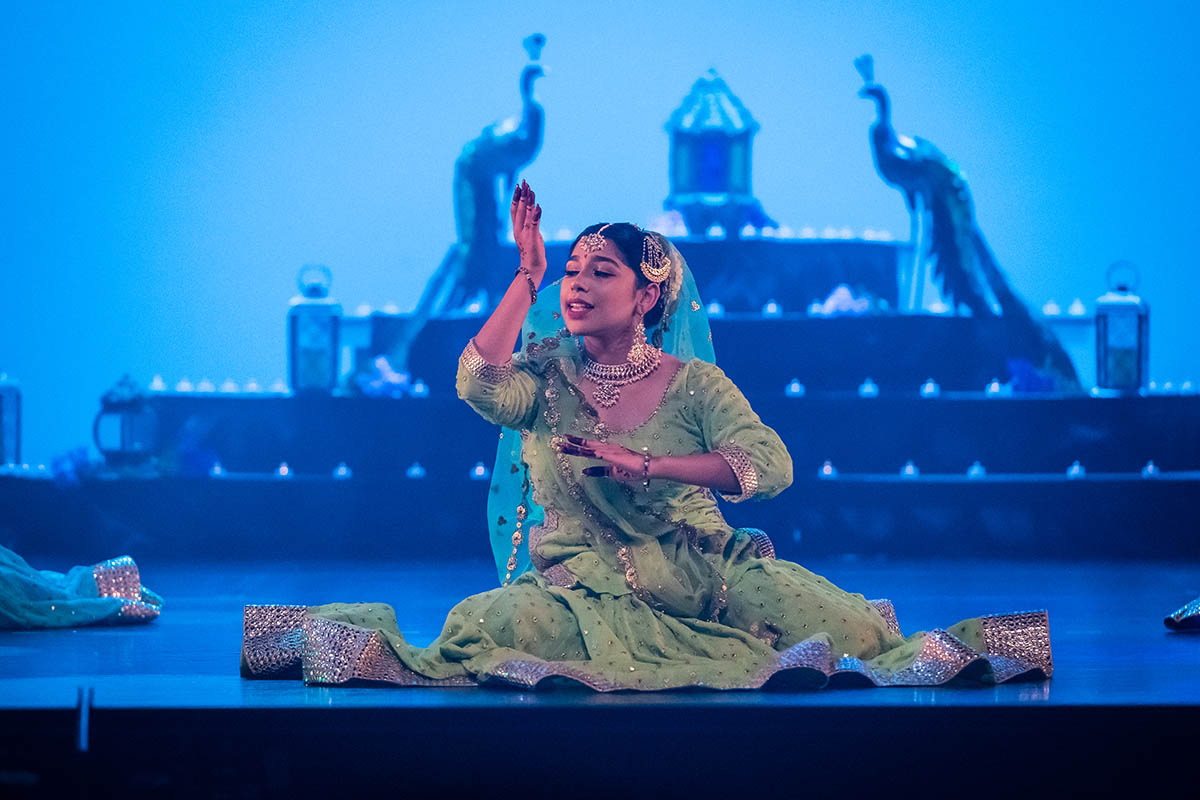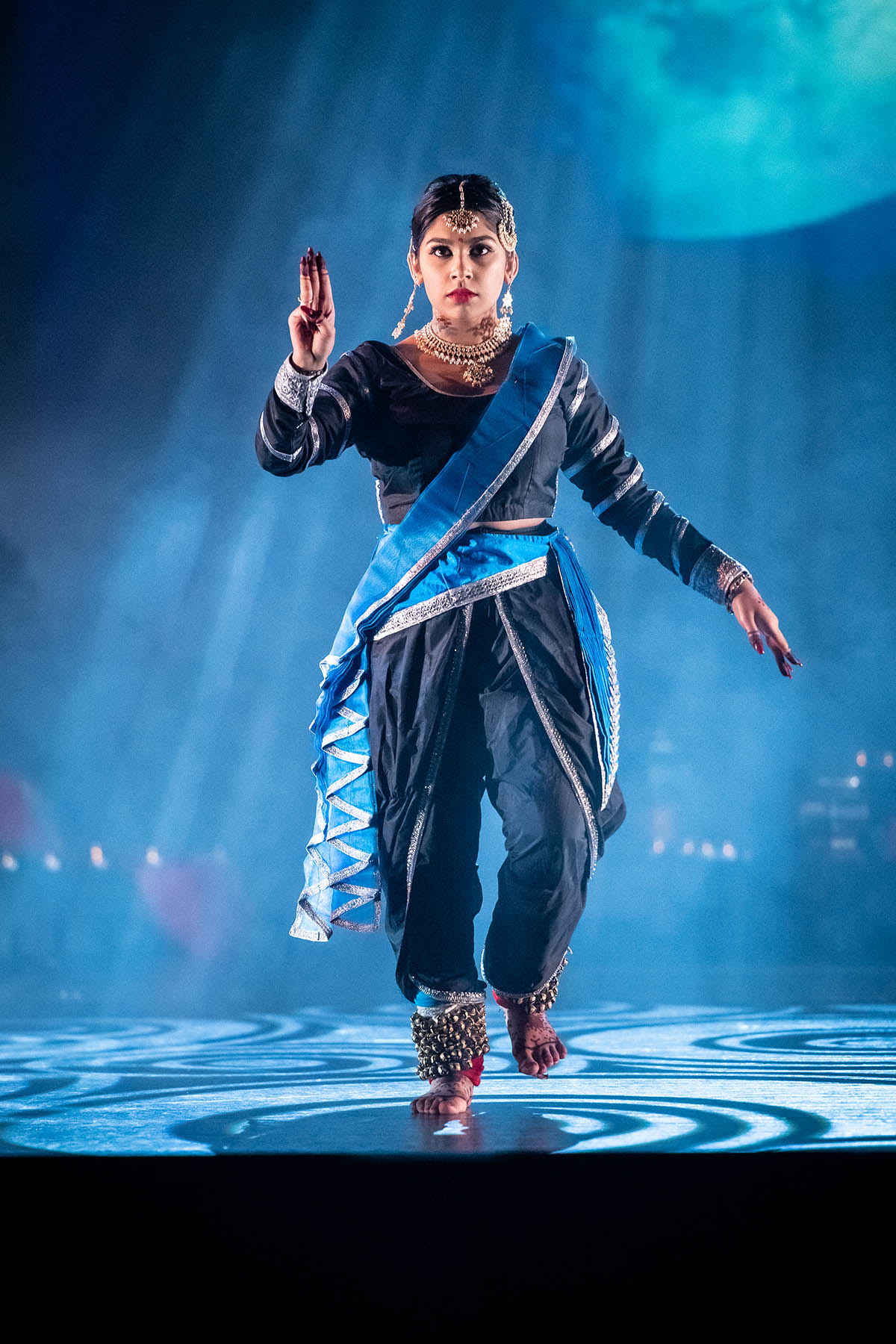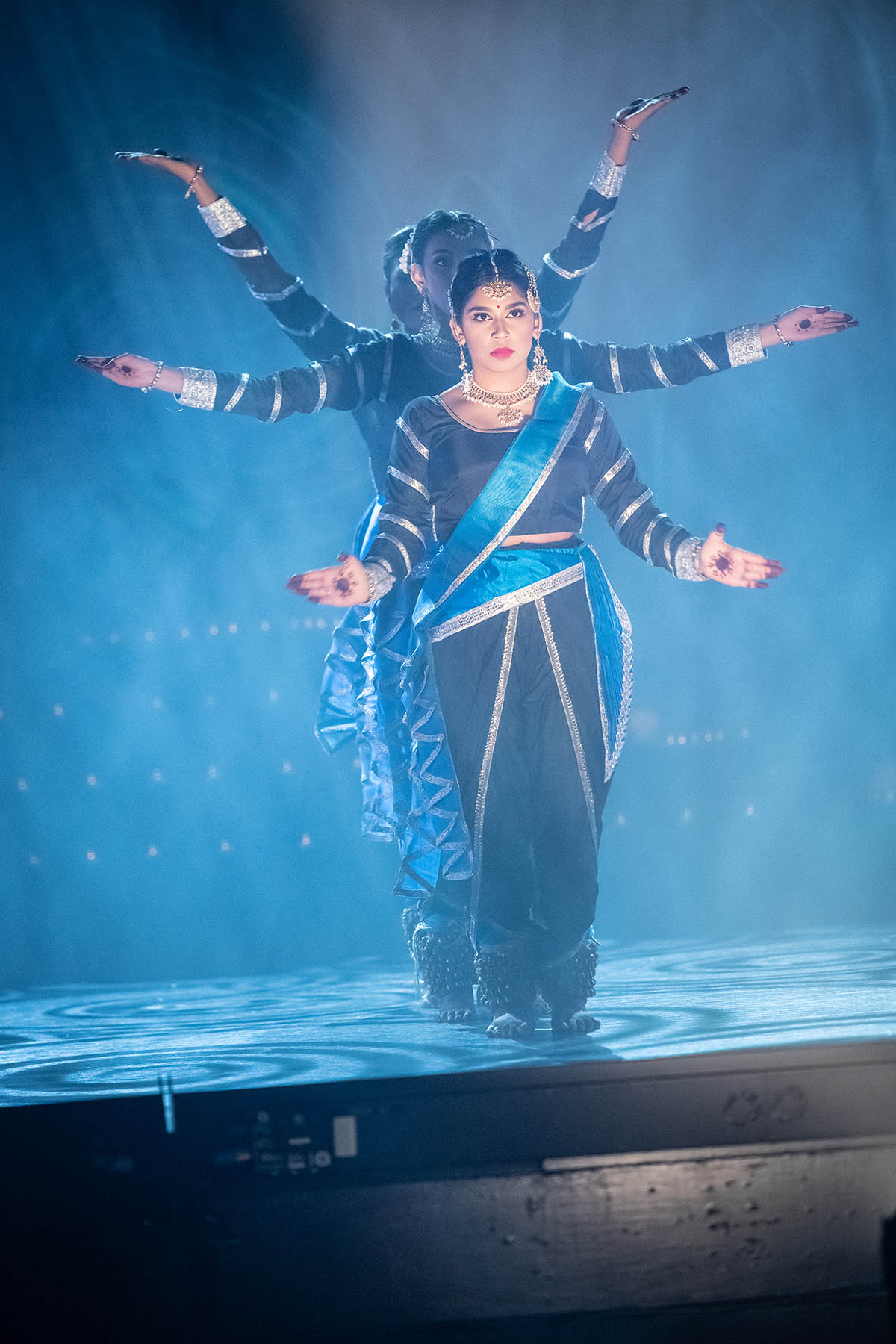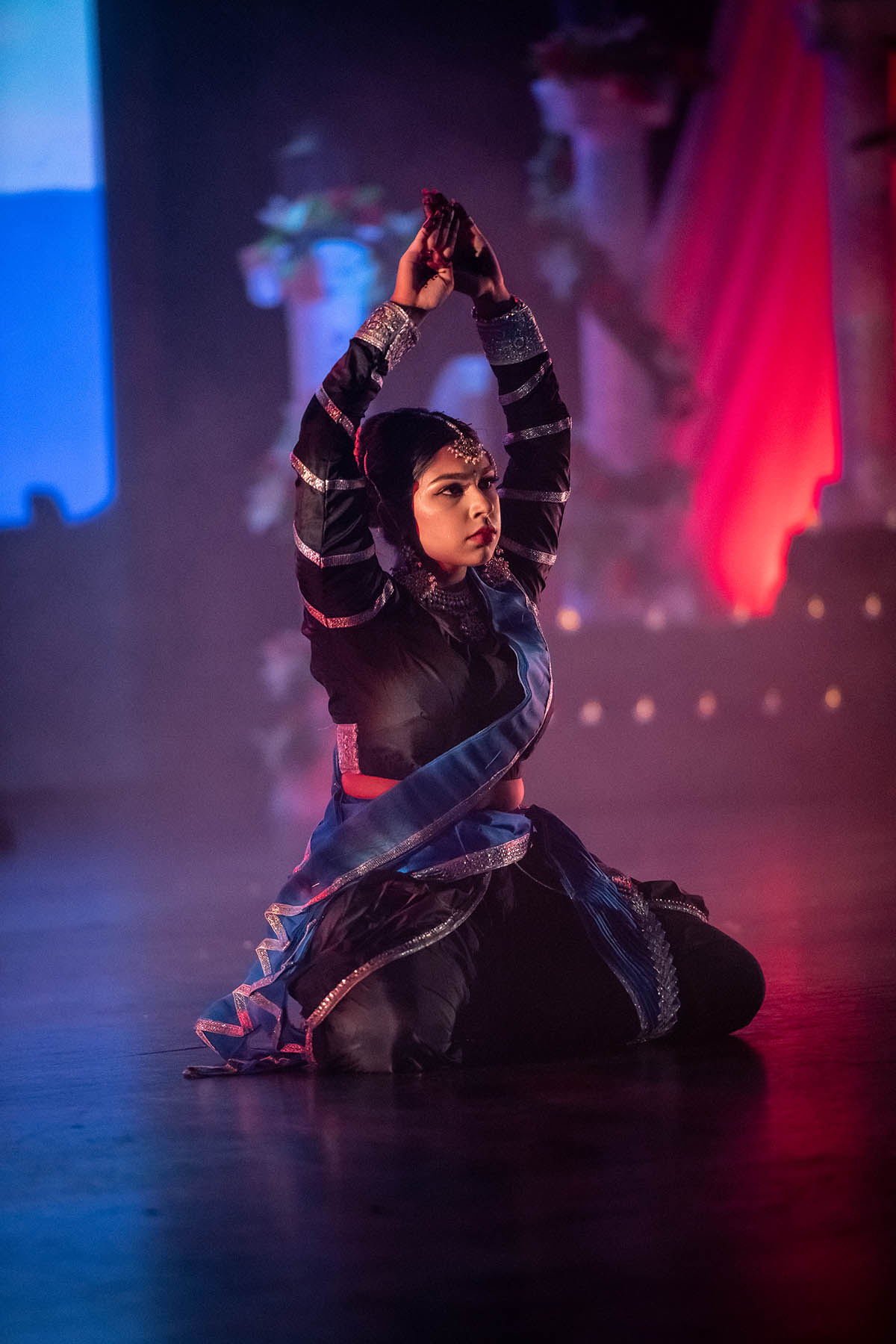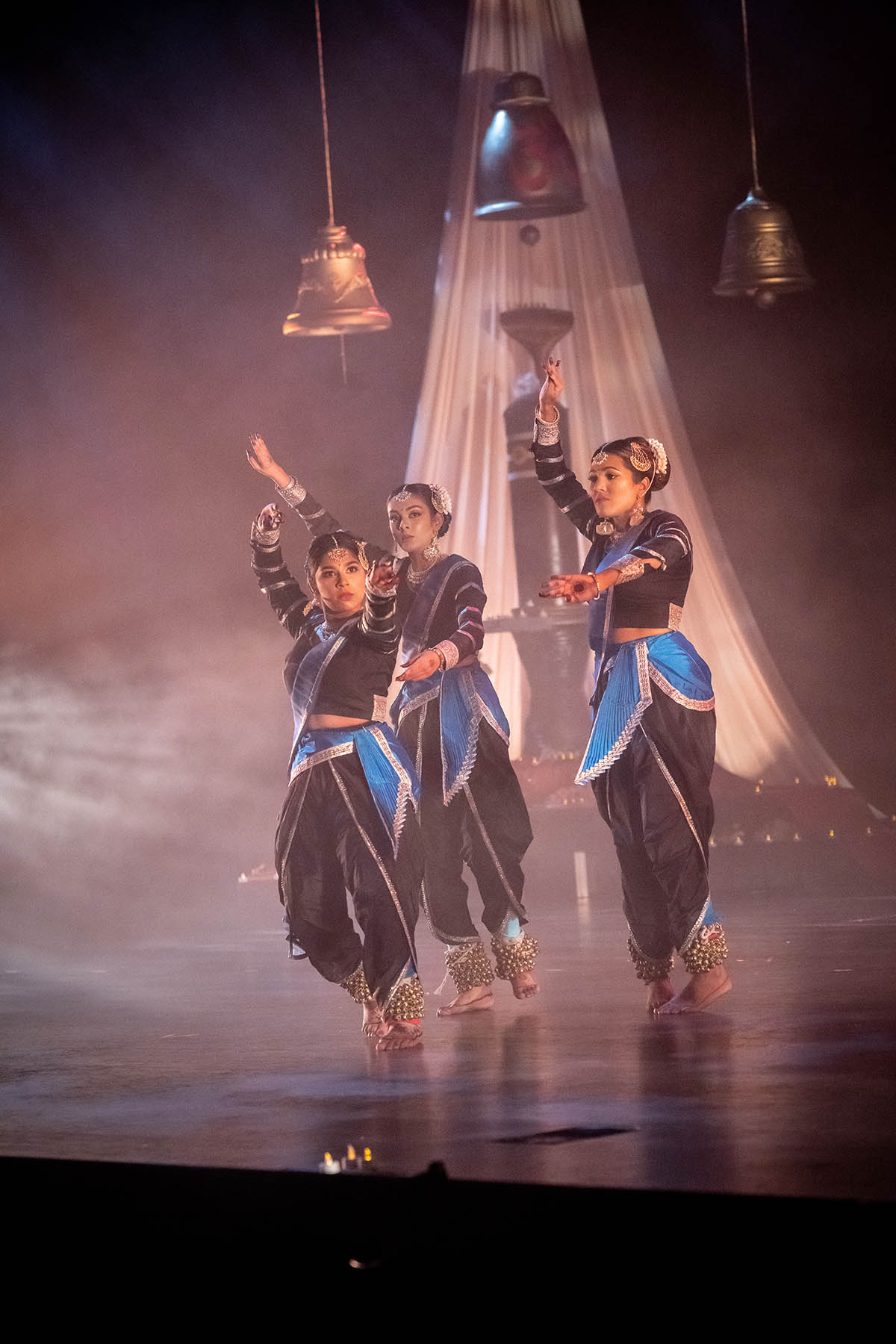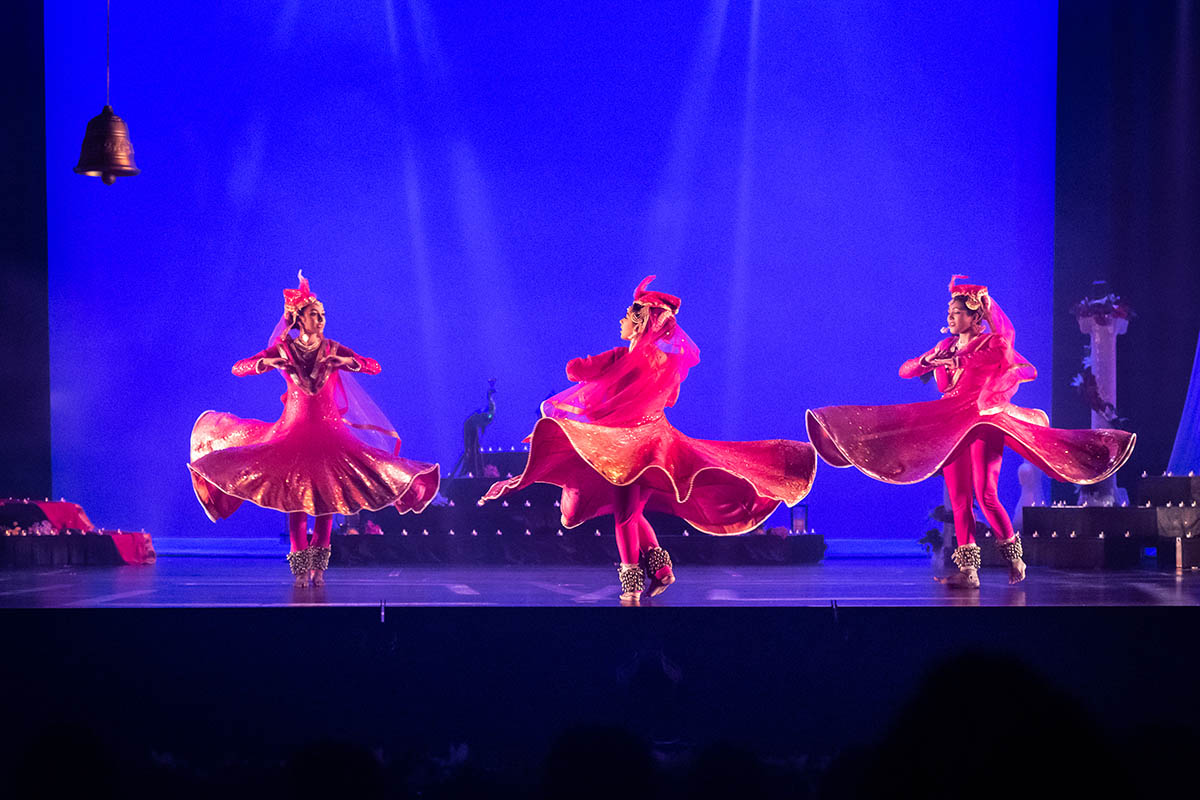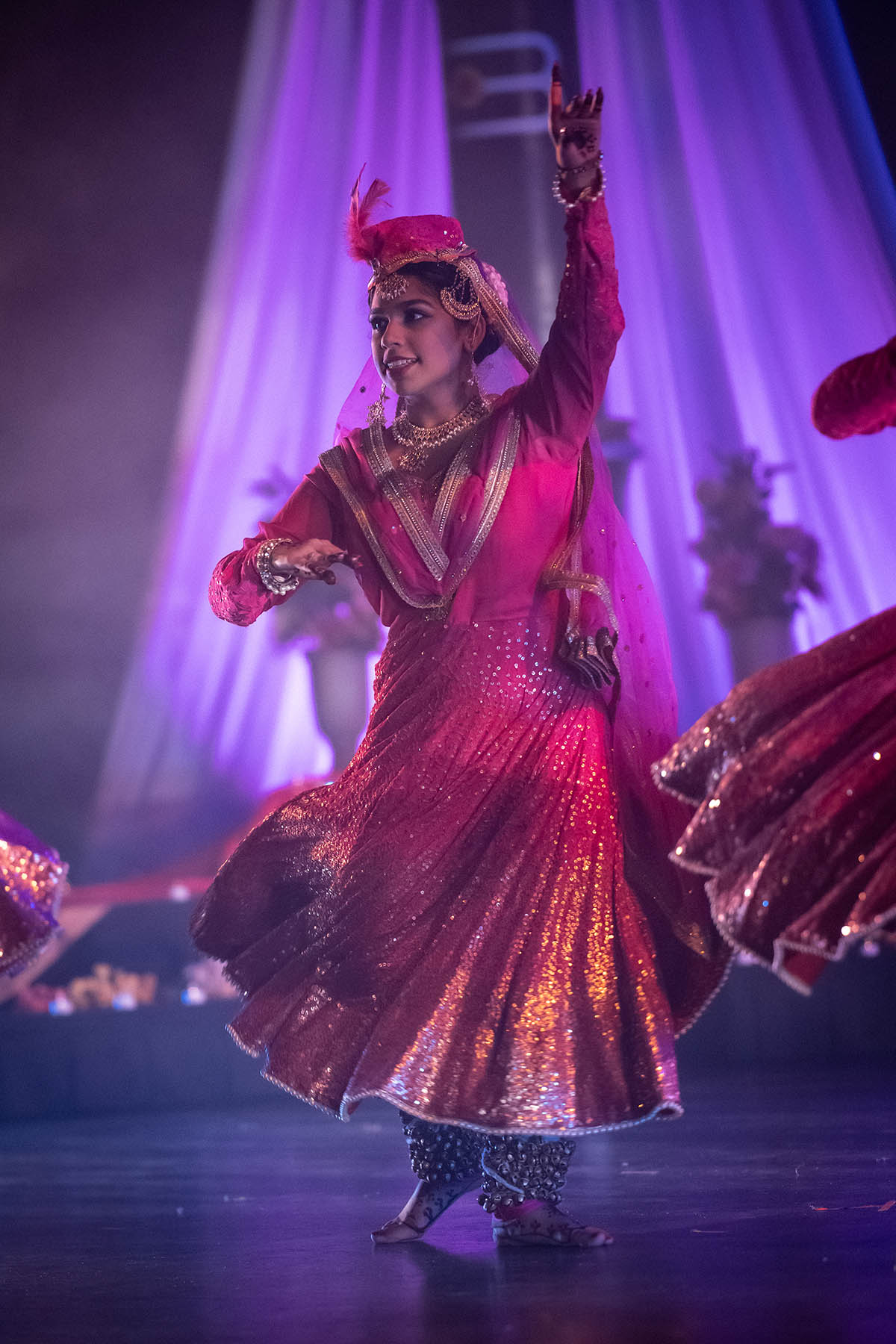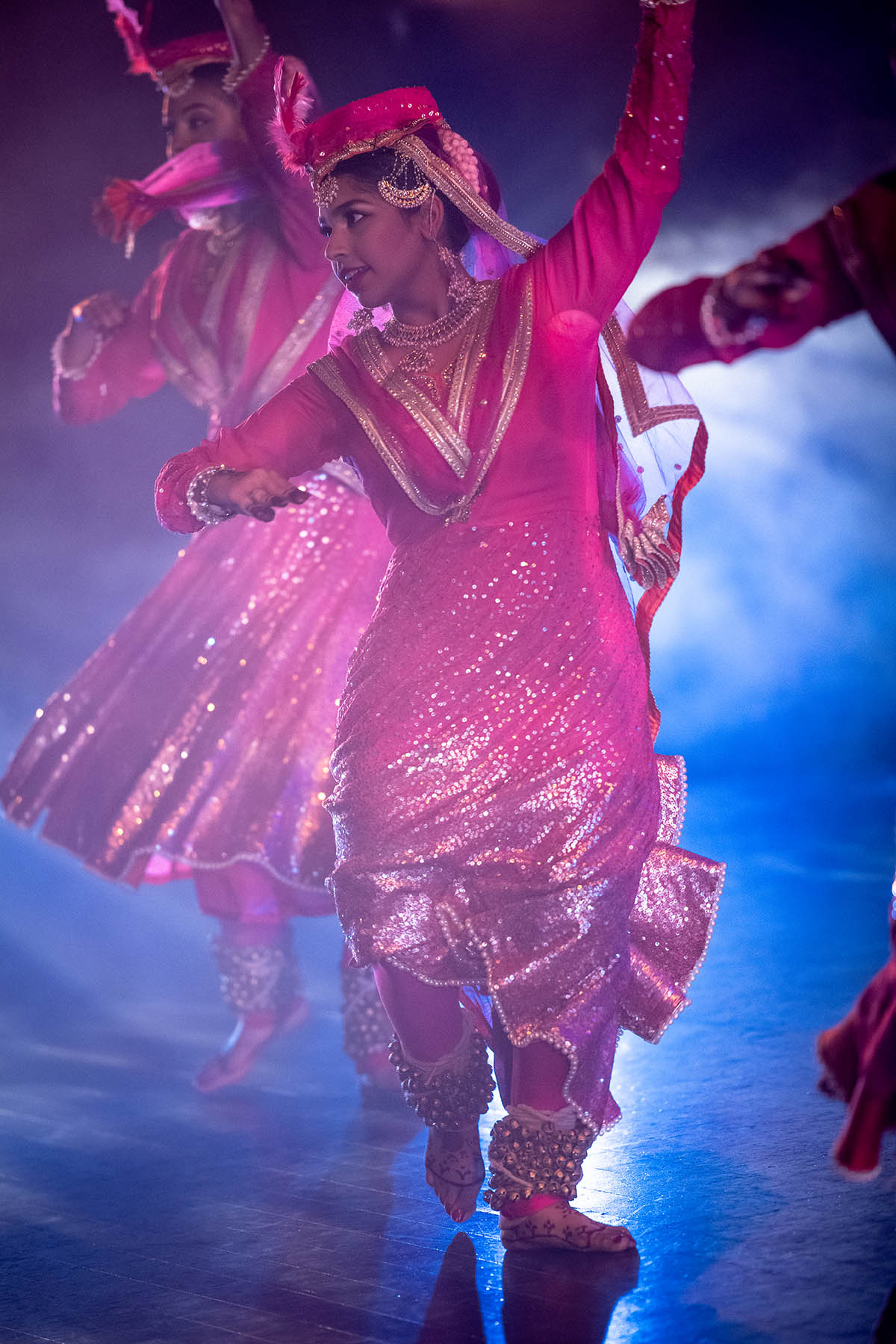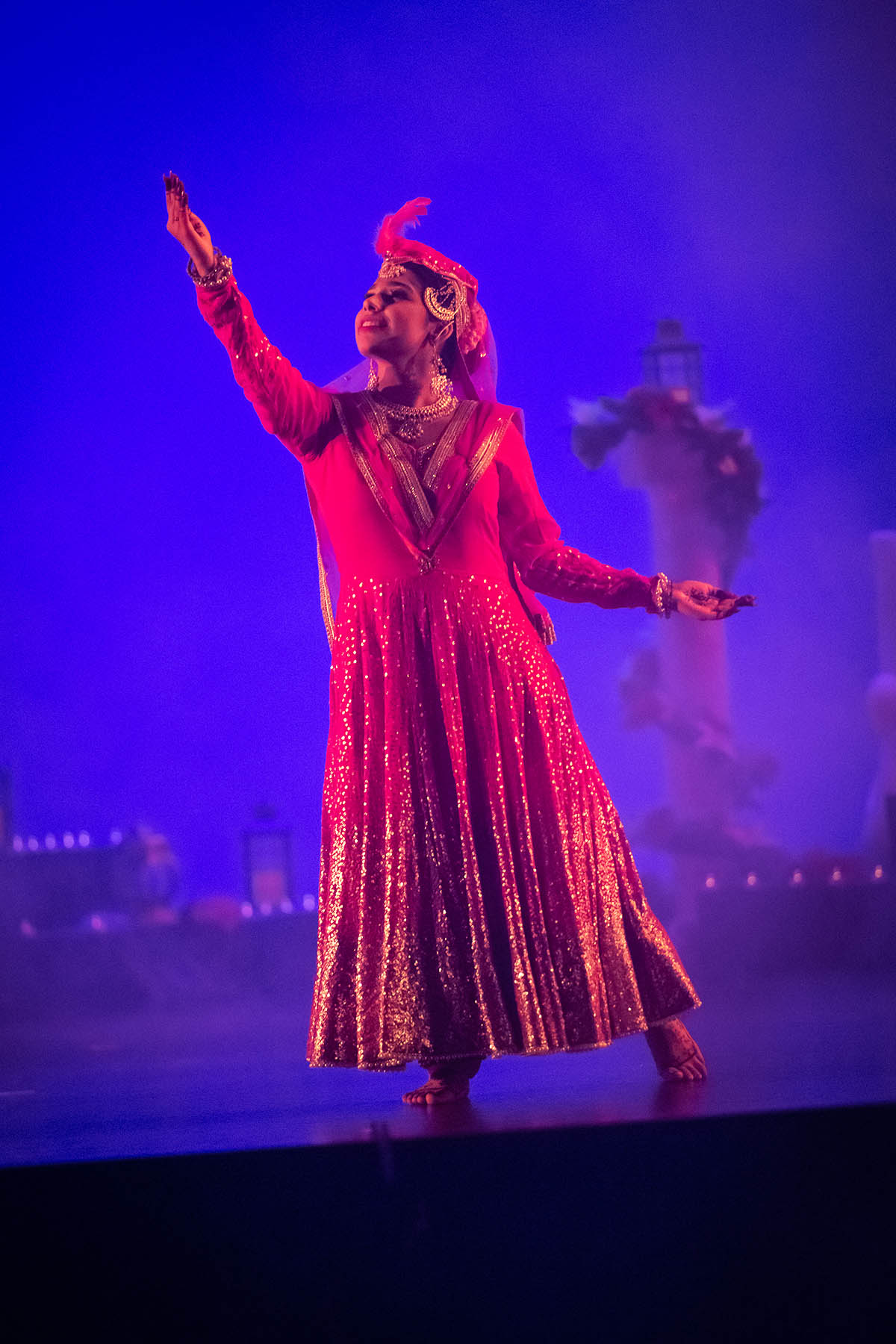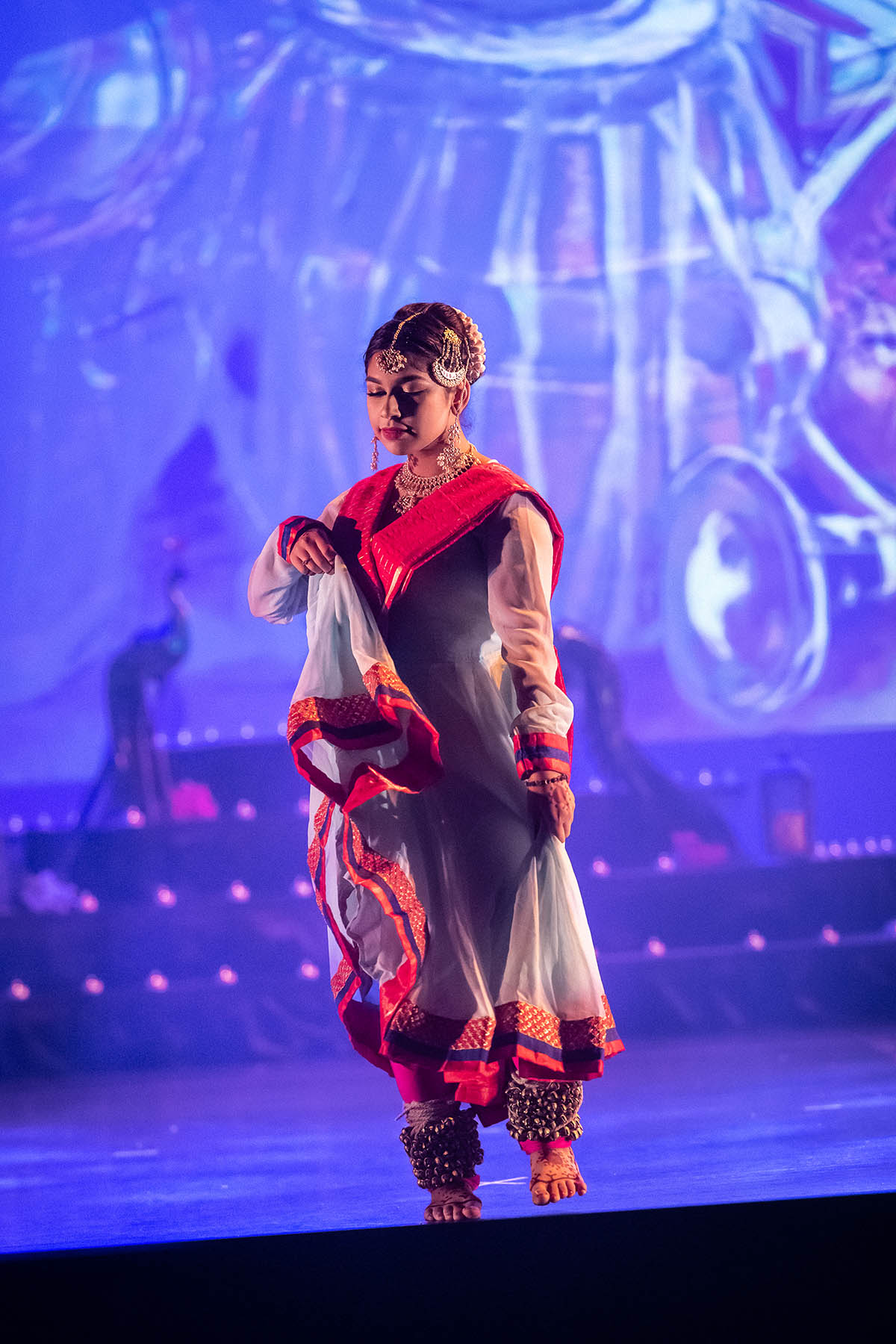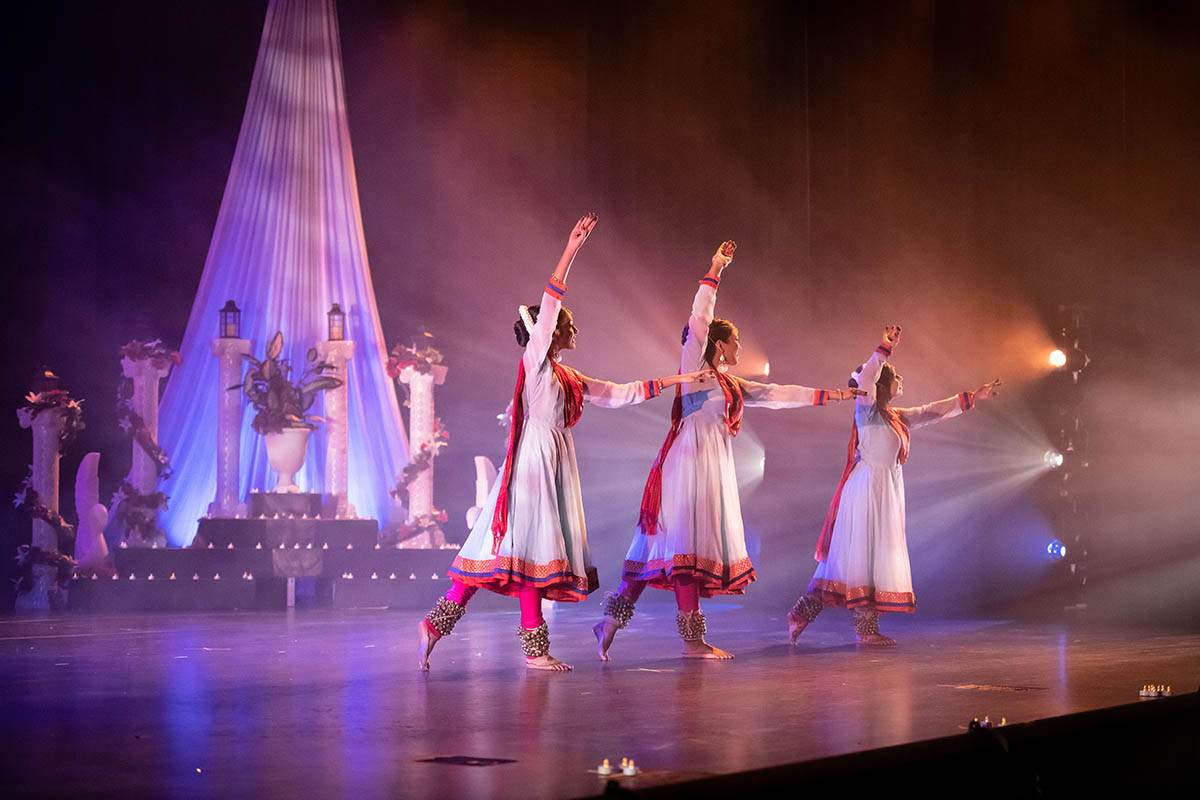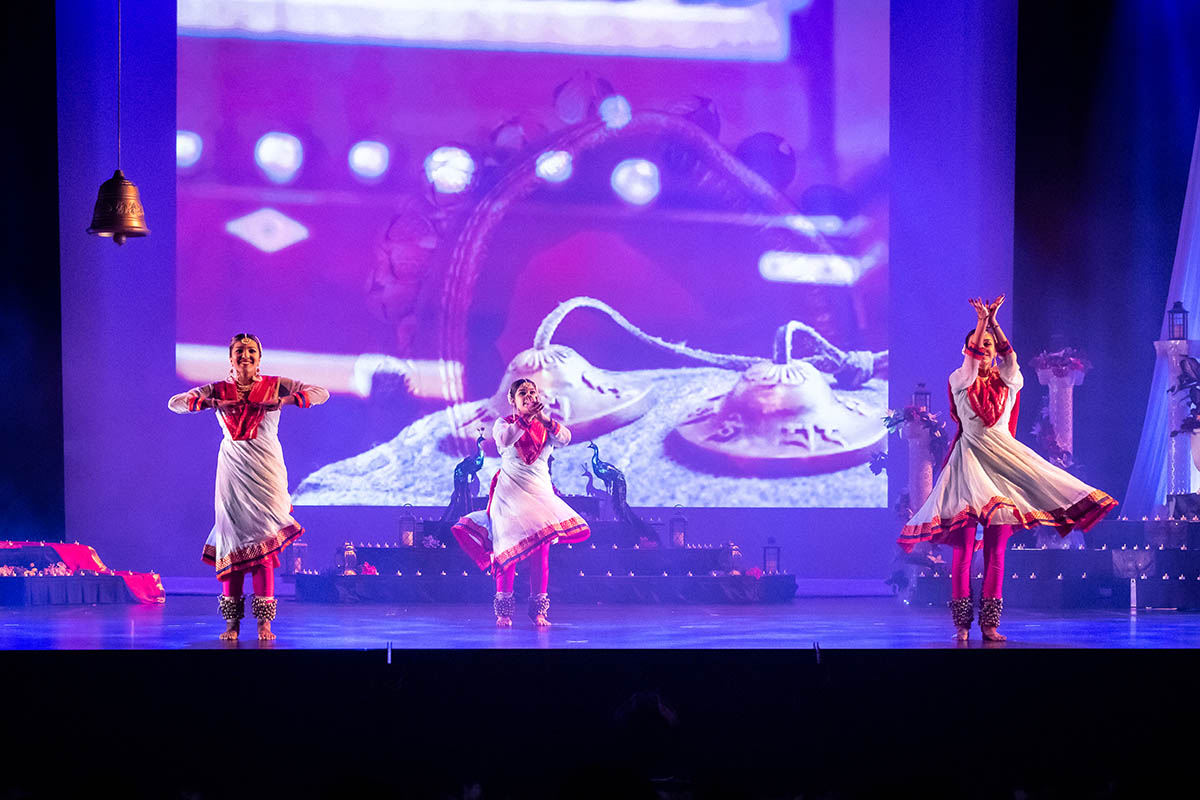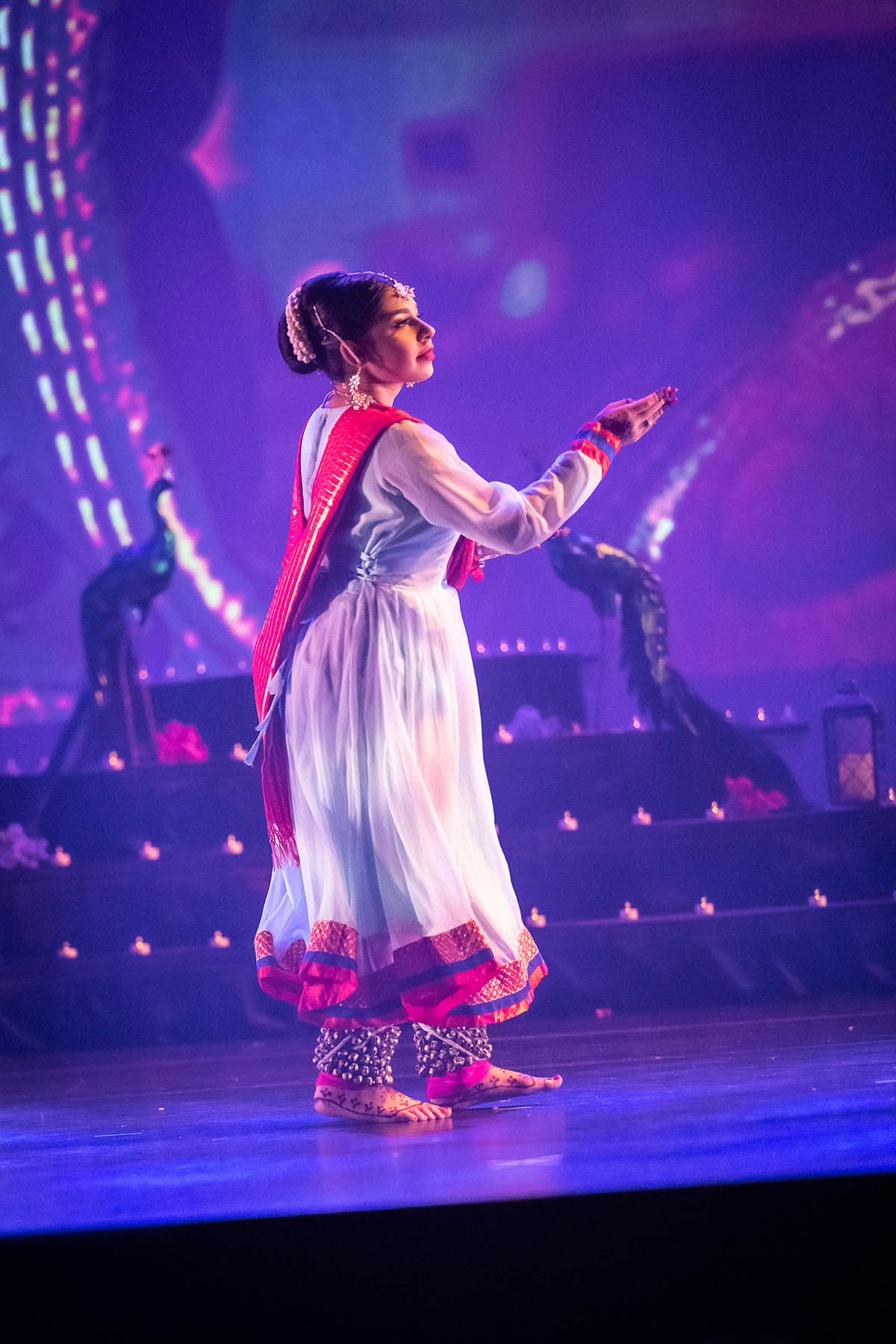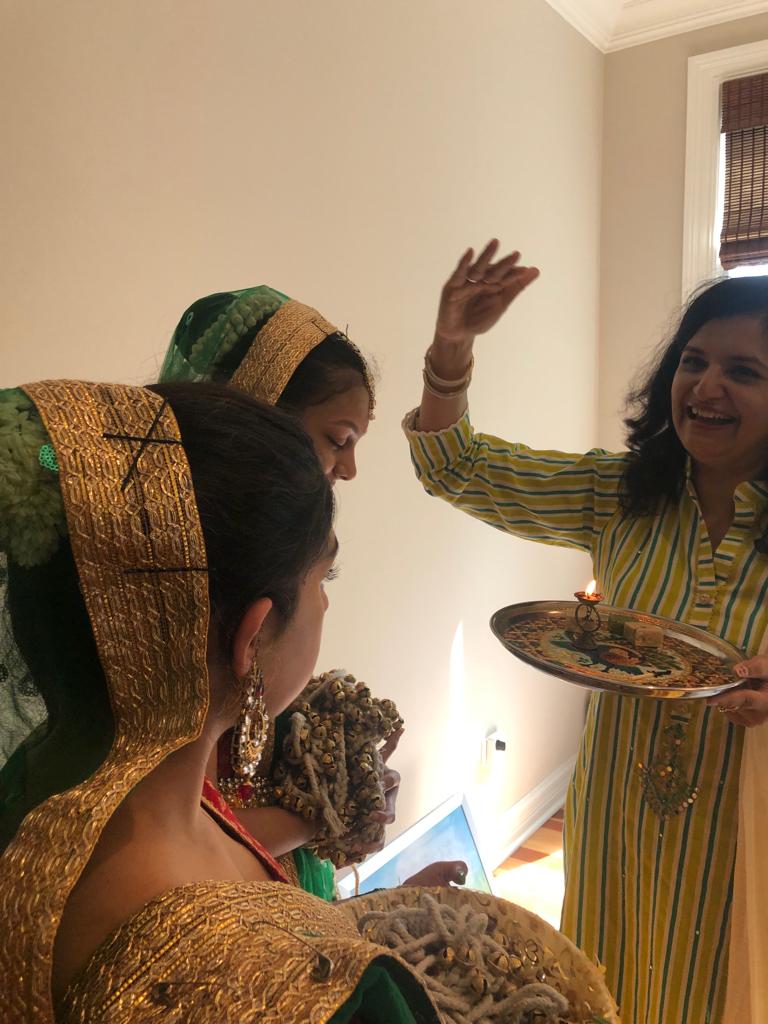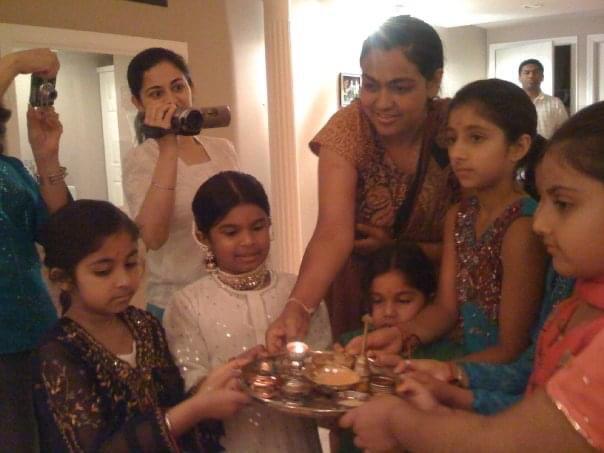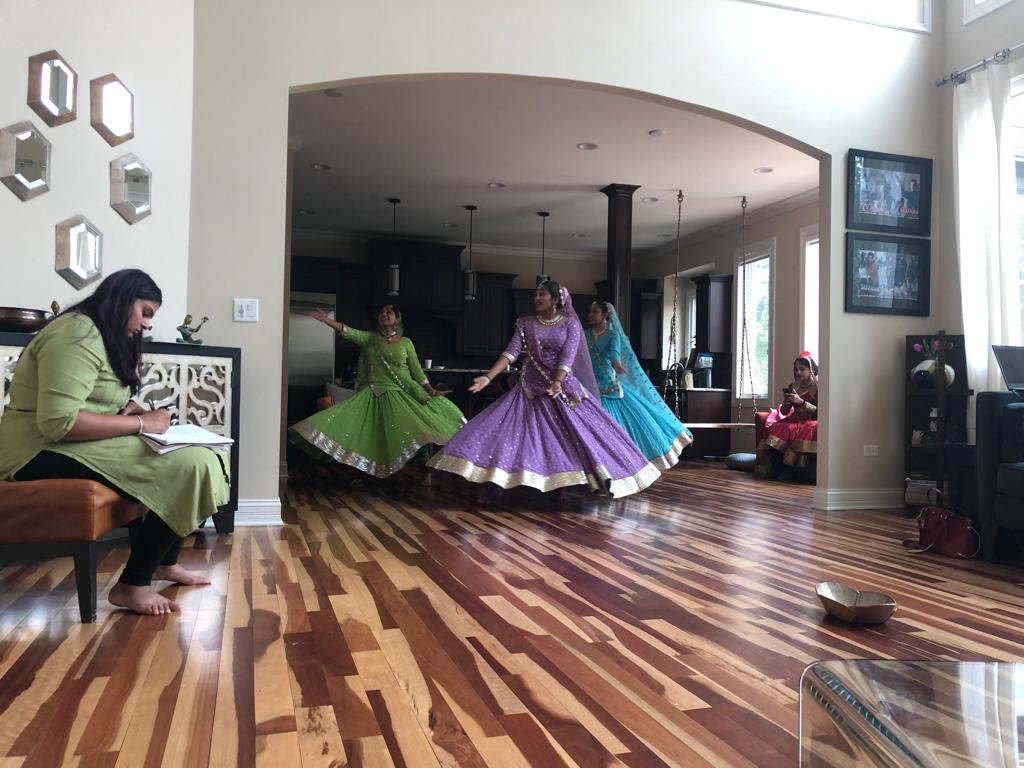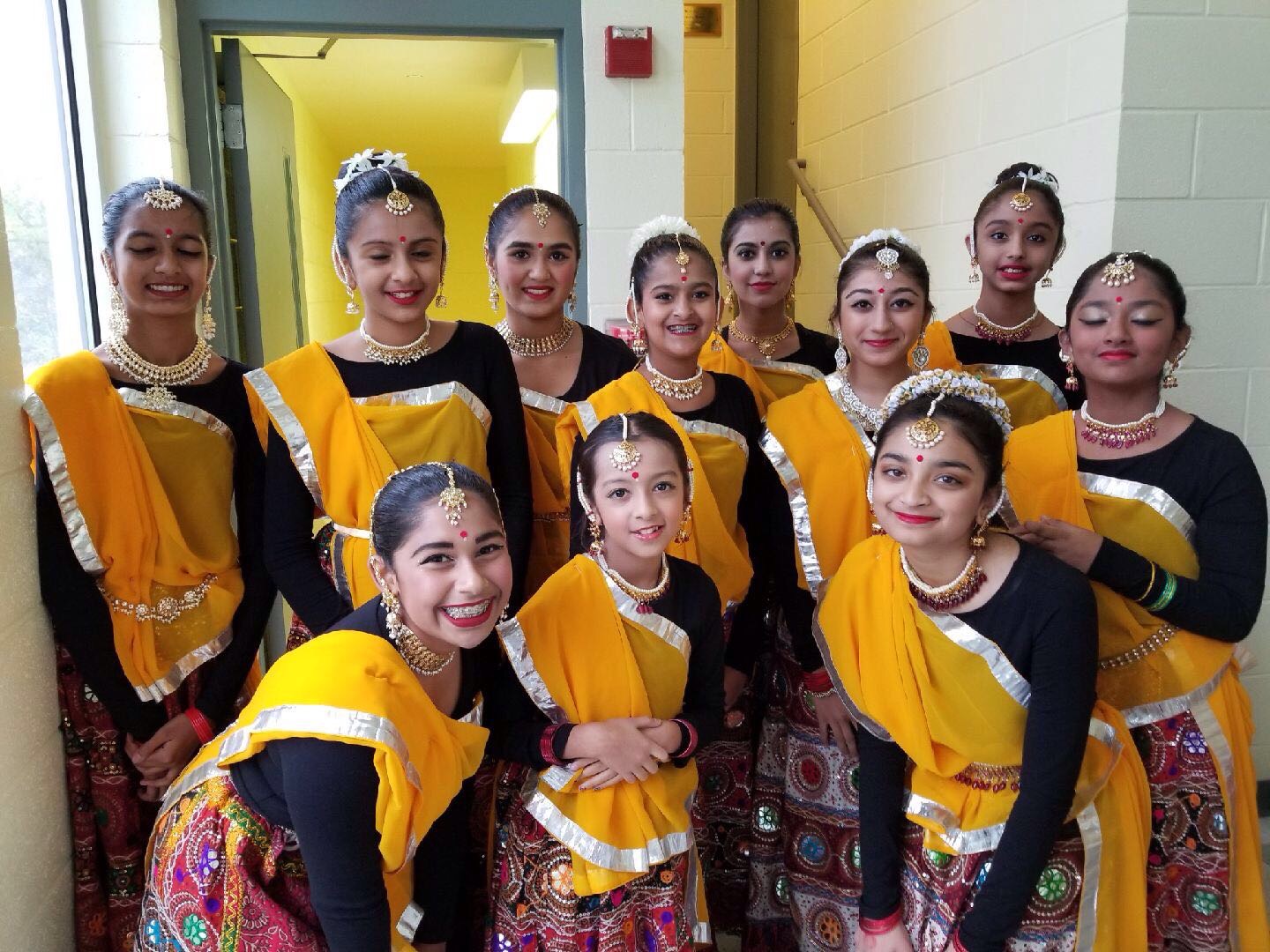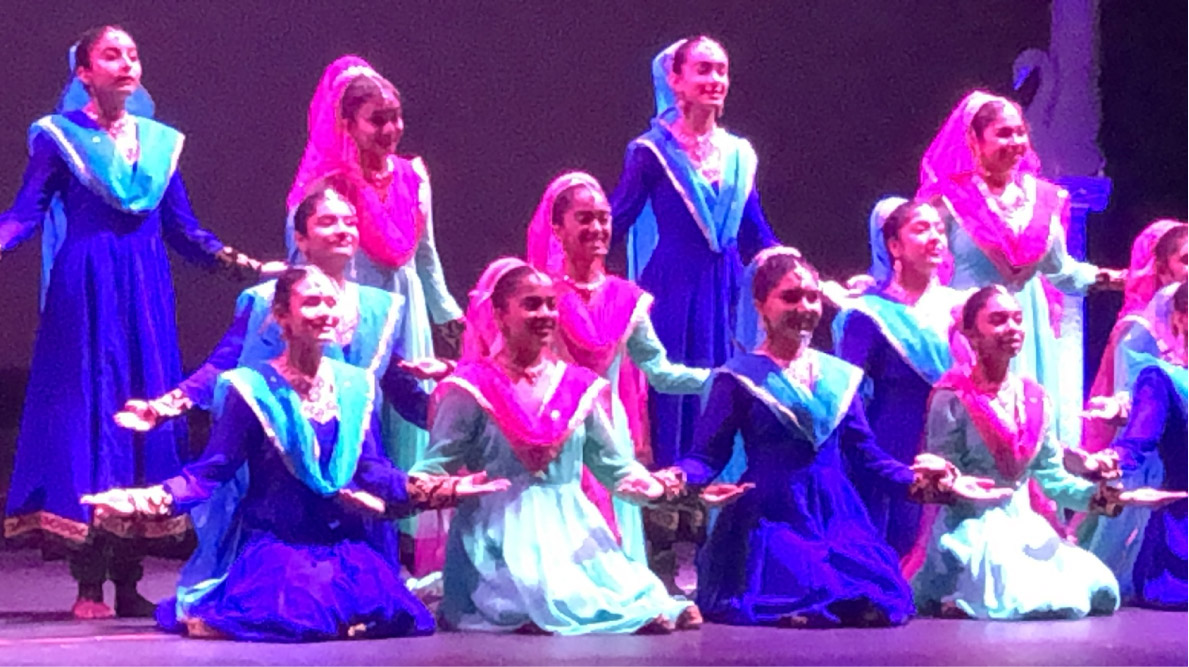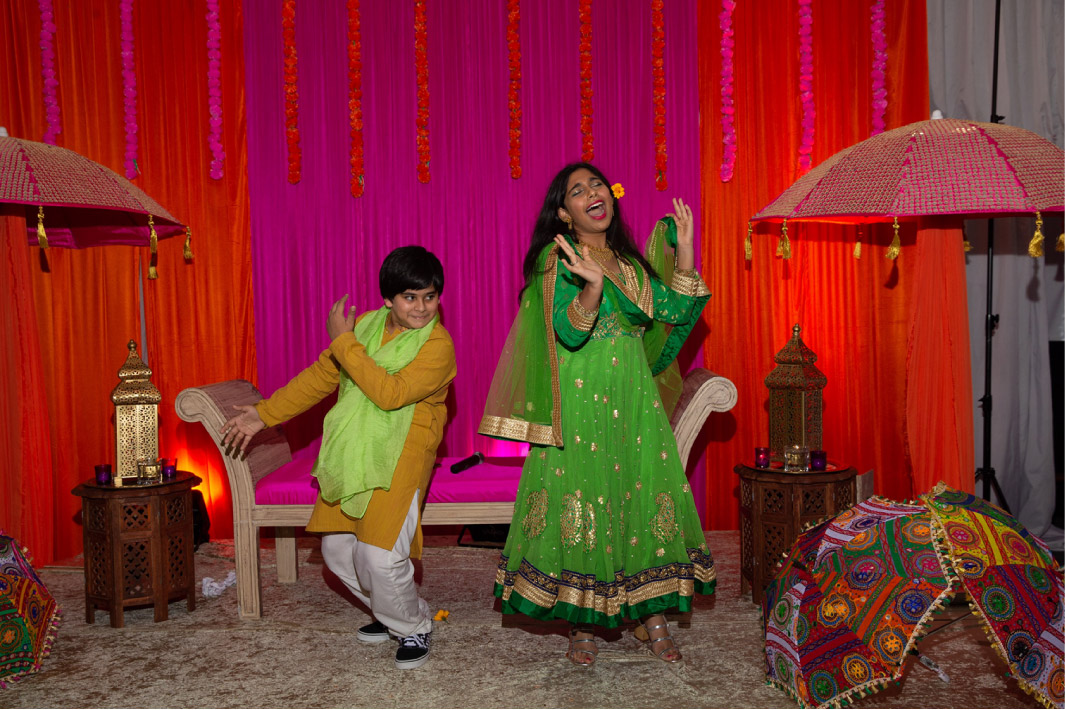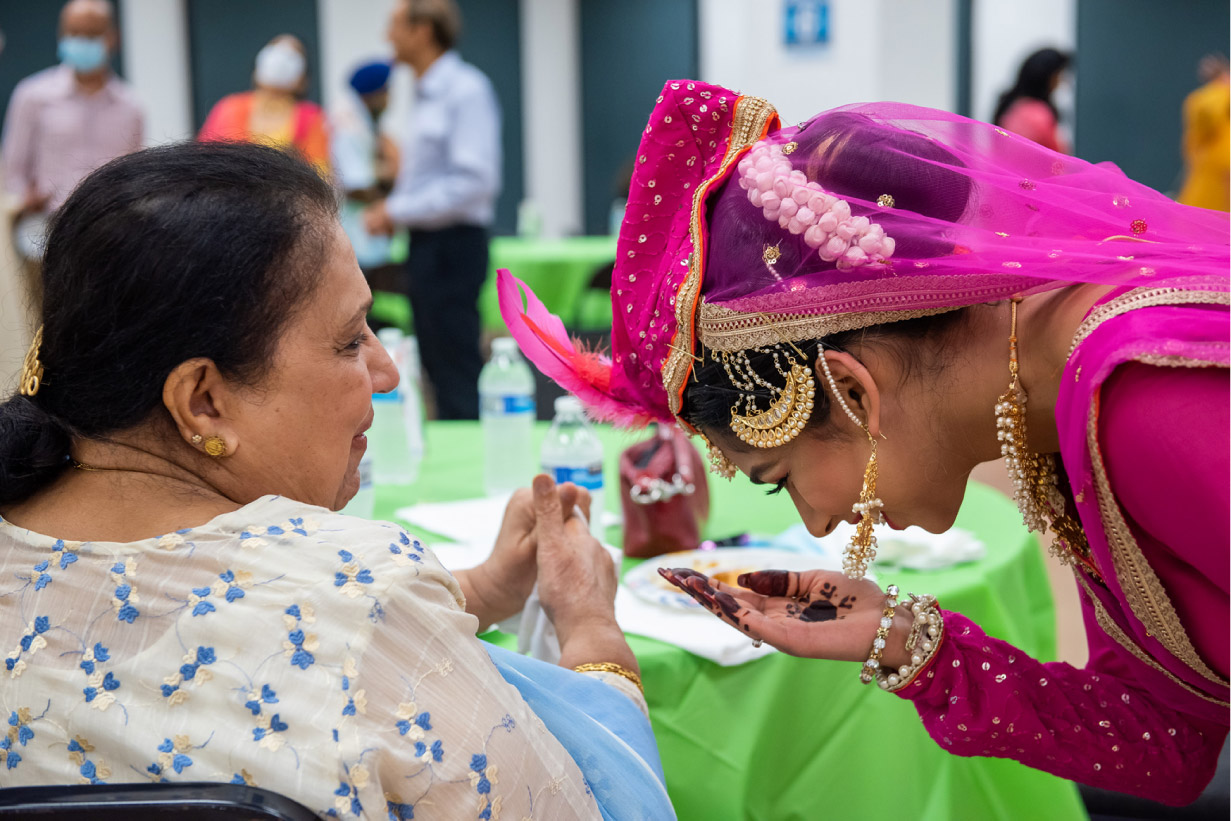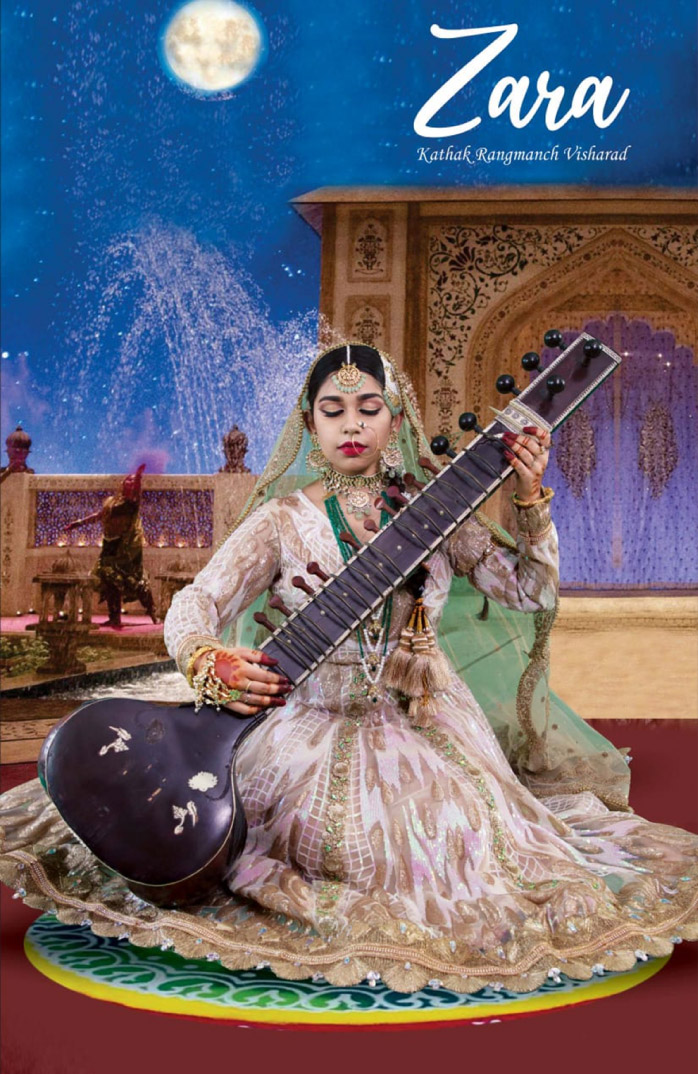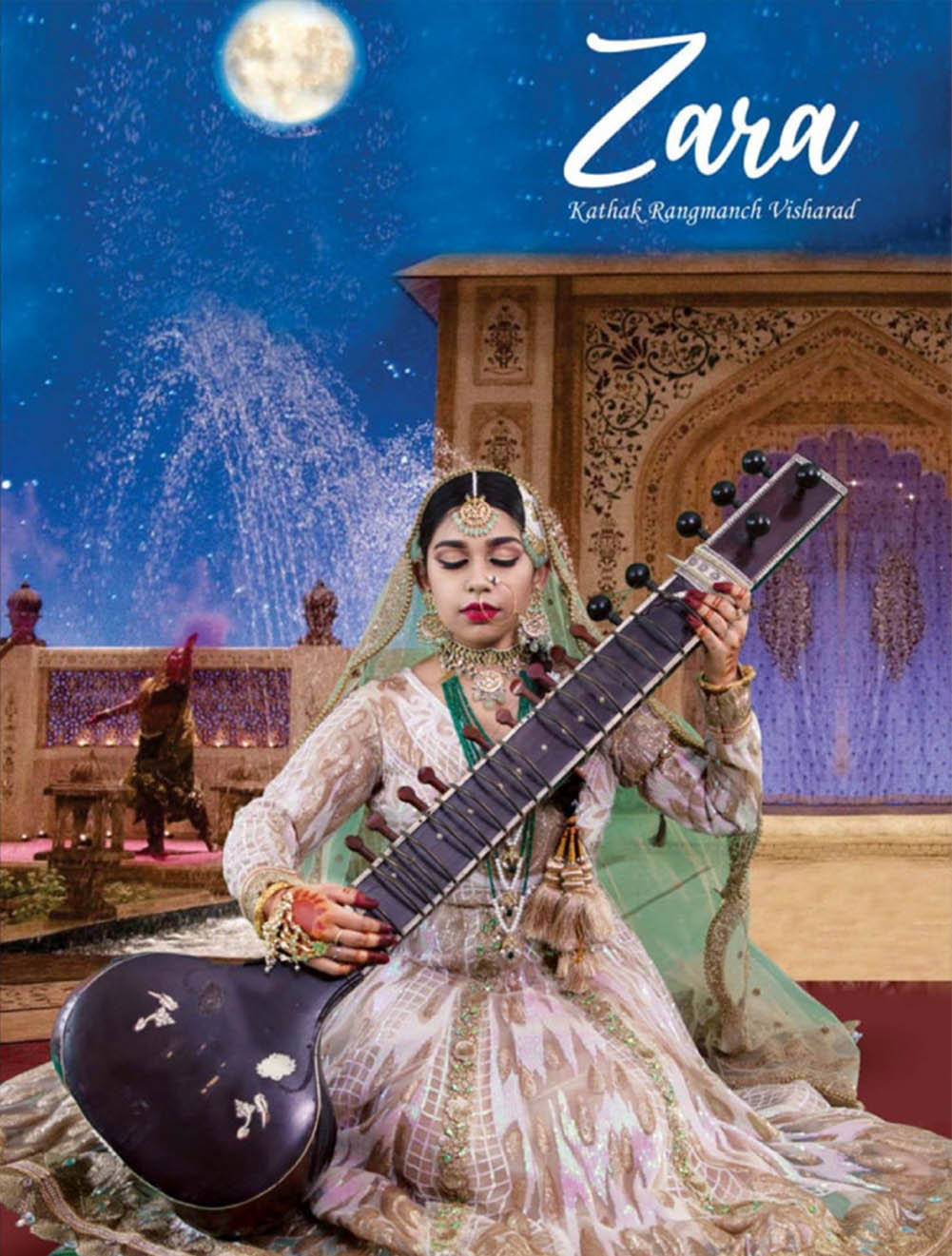
chashm ko chāhiye har rang meñ vā ho jānā
it’s the rose’s unfolding, Ghalib, that creates the desire to see
it is the duty of the open eye to be aware of every color
-Mirza Ghalib
Kathak is a classical Indian dance form. The term Kathak is derived from the Sanskrit word Katha which means “story”, and Kathakar which means “the one who tells a story”.
Spiritually, Kathak focuses on worship through dance where the dancer makes contact with earth in order to reach God.
Stylistically, this dance form emphasizes rhythmic movements of feet adorned with small bells (Ghungroos), and hand and body movements harmonized to music. Audiences are captivated by swift pirouettes, unique rhythmic virtuosity and lyrical exploration of romantic as well as devotional poetry. Over time, Kathak evolved into three main forms of dance — Lucknow, Jaipur and Benares “gharanas” (schools).
Zara trained in the Jaipur Gharana under Guru Sheetal Dhanani. She was the only one in her starting class of 60 to achieve the honor of being invited to perform a “Rangmanch Visharad Pravesh” by their Guru. The “Rangmanch Pravesh” is the ultimate test. A graduating dancer is expected to perform all dances showcasing their full Kathak repertoire, and demonstrating their confidence in performing in front of large audiences. Importantly, Ragmanch Pravesh qualifies the dancer to teach independently, create their own choreography, and become a “Guru” to other students.

chashm ko chāhiye har rang meñ vā ho jānā
it’s the rose’s unfolding, Ghalib, that creates the desire to see
it is the duty of the open eye to be aware of every color
-Mirza Ghalib
Kathak is a classical Indian dance form. The term Kathak is derived from the Sanskrit word Katha which means “story”, and Kathakar which means “the one who tells a story”.
Spiritually, Kathak focuses on worship through dance where the dancer makes contact with earth in order to reach God.
Stylistically, this dance form emphasizes rhythmic movements of feet adorned with small bells (Ghungroos), and hand and body movements harmonized to music. Audiences are captivated by swift pirouettes, unique rhythmic virtuosity and lyrical exploration of romantic as well as devotional poetry. Over time, Kathak evolved into three main forms of dance — Lucknow, Jaipur and Benares “gharanas” (schools).
Zara trained in the Jaipur Gharana under Guru Sheetal Dhanani. She was the only one in her starting class of 60 to achieve the honor of being invited to perform a “Rangmanch Visharad Pravesh” by their Guru. The “Rangmanch Pravesh” is the ultimate test. A graduating dancer is expected to perform all dances showcasing their full Kathak repertoire, and demonstrating their confidence in performing in front of large audiences. Importantly, Ragmanch Pravesh qualifies the dancer to teach independently, create their own choreography, and become a “Guru” to other students.
SOLO SHOWCASE
Zara chose her two dances because they both reflect strength and power of love in very contrasting dance styles. Her solo begins with “Pyar Kiya to Darna Kya”, which translates to “Why Should I Be Afraid in Love?” In this piece the dancer displays a defiant attitude to societal norms that frown upon love between people belonging to different classes. Instead of hiding her feelings, she openly questions why her love must be policed.
In her demand to be able to love who she wants she is prepared to die rather than live in fear and uses the declaration of love as an act of rebellion. The dancer displays these emotions through bold movement of the arms and intricate foot work inspired by the “Lucknow gharana.”
Then the solo turns into the song “Rangi Sari Gulabi Chunariya.”This translates to “My Lover Colored my Veil Pink.” In this traditional thumri performance piece, the dancer depicts the innocence and excitement of young love. A young girl in love is preoccupied with the thoughts of meeting her lover. She pretends to be shy and coy, blushing under her lover’s gaze. Other times she pretends to be annoyed at him so that he can indulge her and make up. Subtle facial expression and hand gestures portray the fluttering motions of a young heart.
Both songs attest to the complex and often contradicting emotions that love can evoke. It is also a reflection of how women throughout time have used dance to express
GANESH VANDANA
Ganesh Vandana is a prayer in praise of Lord Ganesha. It is customary to have this prayer prior to starting the technical part of the Visharad. The dancer prays for focus, stamina and mindfulness to be able to immerse herself completely in the music while simultaneously being able to move her body to the demanding dance routine.
JAIPUR
This dance is a specialty of the Jaipur Gharana. The dance consists of rapid spins, intricate footwork and layakari or rhythmic wizardry. Various technical pieces are performed some of which are Aamad, Chakradhaar, Palta, Sawal Jawab and the Kavit Toda. The Sawal Jawab (Question-Answer) is the highlight of the dance where in one dancer asks a question and the other two respond using only footwork.
GHAR MORE PARDESIA
Based on Ram-Leela, a folk re-enactment of the life of Lord Rama and his wife, Goddess Sita based on the Hindu religious epic “Ramayana”, is a soothing classical dance depicting Sita’s wait for Rama. This dance is a great example of the story telling aspects of Kathak. For centuries dance troupes moved from village to village and used song and dance to familiarize their mostly illiterate audience to great epics such as the Ramayana and Mahabharata.
SHIV TANDAV
Shiv Tandav is an aggressive dance form of Kathak. It is believed by Hindus that Lord Shiva performed Tandav to channel his anger. In Tandav, the dancers perform bold moves on fast beats with high energy. The art is in controlling the energy instead of being lost in the flow. The Jaipur Gharana is best known for its marvelous representation of Veer Ras or the “Bravery Genre” and includes strong and swift movements.
TARANA
Tarana is a type of composition in Hindustani classical vocal music which reflects a beautiful blend of Indian and Persian cultures. It was created by the famous poet Amir Khusrau. This dance starts off at Madhya Lay (medium tempo) and transforms to Drut Lay (high tempo) as the music progresses. The dancers showcase their grace, hand movements and footwork in this intricate piece which reaches to a crescendo during which the dancers put in their best foot forward.
TEEN TAAL
Teen Taal (Tatkar) is the fundamental footwork from which all other foot sounds and compositions are created. This dance highlights the dancer’s technical skill, stamina and artistry. Different speeds are also showcased in this piece. In Kathak, the idea of worship through dance involves the spiritual relationship of the dancer in contact with the earth in order to reach God. Ta, body (from Tanu) Thei, Earth (from Sthela) Ei, Lord (from Eishwara) combined to form — the body that dances on the earth for the Lord

